|
View previous topic :: View next topic
|
|
| Author |
Message |
AfterHours
Gender: Male
Location: The Zone
- #111
- Posted: 05/26/2022 22:00
- Post subject:
|
Gian Lorenzo Bernini (1598 - 1680)
Best Works:
7.6/10: Apollo and Daphne (1625) [Sculpture]
7.8/10: The Ecstasy of Saint Teresa (1652) [Sculpture, Architecture and Painting]
8.4/10: St. Peter's Basilica - Principal Architects: Donato Bramante (1503 - 1514); Michelangelo Buonarroti (1546 - 1564); Carlo Maderno (1603 - 1629); Gian Lorenzo Bernini (1629 - 1676) (Building completed and opened 1626; various additions thereafter) [Architecture]
Apollo and Daphne - Gian Lorenzo Bernini (1625) [Sculpture]

Thumbnail. Click to enlarge.
MAIN VIEW - VERY LARGE: https://upload.wikimedia.org/wikipedia/...ped%29.jpg
ALTERNATE VIEW - FIGURE'S LEFT SIDES - VERY LARGE: https://upload.wikimedia.org/wikipedia/...C04591.jpg
ALTERNATE VIEW - FIGURE'S LEFT SIDES - VERY LARGE: https://www.flickr.com/photos/jorge-11/48137202612
ALTERNATE VIEW - FRONT: https://www.flickr.com/photos/profzucke...otostream/
DETAIL - LOWER FRONT: https://www.flickr.com/photos/profzucke...otostream/
DETAIL - BASE FRONT: https://www.flickr.com/photos/profzucke...otostream/
DETAIL - BASE FRONT: https://www.flickr.com/photos/profzucke...otostream/
DETAIL - UPPER RIGHT: https://upload.wikimedia.org/wikipedia/...015-1a.jpg
DETAIL - UPPER RIGHT: https://www.flickr.com/photos/profzucker/30558368563/
DETAIL - LOWER RIGHT: https://www.flickr.com/photos/profzucke...otostream/
DETAIL - BASE RIGHT: https://www.flickr.com/photos/profzucke...otostream/
DETAIL - BACK: https://www.flickr.com/photos/profzucke...otostream/
The Ecstasy of Saint Teresa - Gian Lorenzo Bernini (1652) [Sculpture, Architecture and Painting]
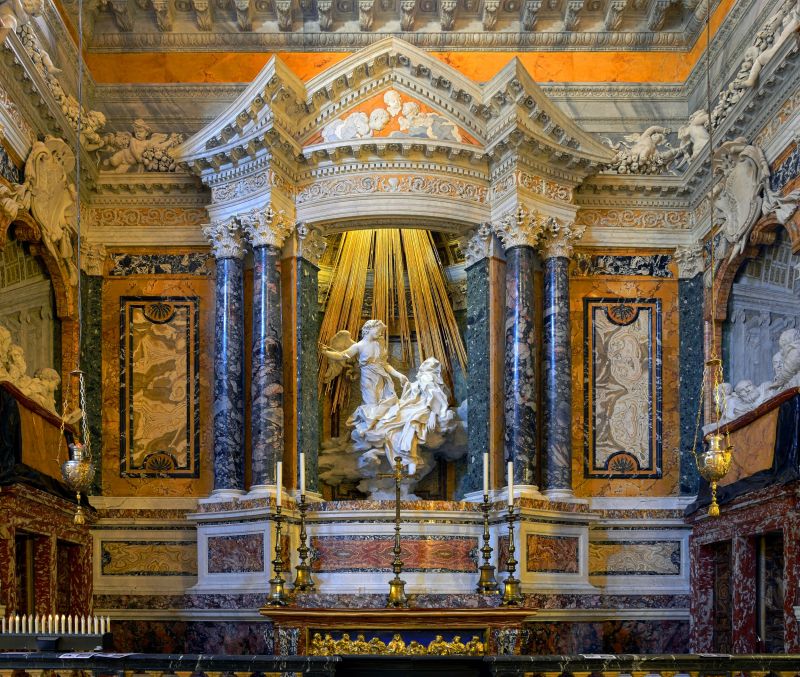
Thumbnail. Click to enlarge.
WIDE VIEW - SCULPTURE AND ARCHITECTURAL ENSEMBLE: https://upload.wikimedia.org/wikipedia/...me_HDR.jpg
MAIN VIEW - VERY LARGE - MAIN SCENE: Angel and Saint Teresa in Ecstasy: https://upload.wikimedia.org/wikipedia/...015-2a.jpg
LOW ANGLE VIEW - INCLUDES DOVE, TROMPE L'OEIL VAULT AND LIGHT FROM ABOVE: https://www.independent.ie/world-news/e...e92c48be_1
VIRTUAL PANORAMIC VIEW - FULL VIEW (Click below where it says "St. Teresa"): https://www.manywhere.net/santa-maria-d...a-in-rome/
ANGLED VIEW - MAIN SCENE: https://www.flickr.com/photos/profzucke...otostream/
ANGLED VIEW - MAIN SCENE: https://www.flickr.com/photos/profzucke...otostream/
DETAIL - MAIN SCENE: https://www.flickr.com/photos/profzucke...otostream/
DETAIL - MAIN SCENE: https://www.flickr.com/photos/profzucker/50989093253/
DETAIL - MAIN SCENE: https://www.flickr.com/photos/profzucke...otostream/
DETAIL - MAIN SCENE: https://www.flickr.com/photos/profzucke...otostream/
LOW ANGLE VIEW - TROMPE L'OIEL VAULT: https://www.flickr.com/photos/profzucke...otostream/
DETAIL - DOVE, ANGELS, TROMPE L'OEIL VAULT: https://www.flickr.com/photos/profzucke...otostream/
DETAIL - ANGELS, TROMPE L'OEIL VAULT: https://www.flickr.com/photos/profzucke...otostream/
DETAIL - STAINED GLASS "LIGHT PASSAGE": https://www.flickr.com/photos/profzucke...otostream/
RIGHT SIDE VIEW - RIGHT WITNESS BOX: https://www.flickr.com/photos/profzucke...otostream/
RIGHT SIDE VIEW - RIGHT WITNESS BOX: https://upload.wikimedia.org/wikipedia/...ttoria.jpg
LEFT SIDE AND MID VIEW - LEFT WITNESS BOX ADN MAIN SCENE: https://upload.wikimedia.org/wikipedia/...ia_-_2.jpg
LEFT SIDE VIEW - LEFT WITNESS BOX: https://www.flickr.com/photos/profzucke...otostream/
DETAIL - LEFT SIDE VIEW - LEFT WITNESS BOX: https://www.flickr.com/photos/profzucke...otostream/
IMAGE FOR SCALE - Cornaro Chapel, Santa Maria della Vittoria, Rome: https://www.flickr.com/photos/profzucker/7827295048
Rough draft / outline / Misc notes for future analysis...
-Bernini was probably the greatest Baroque sculptor and architect ... also a painter and stage director of theater
-His Ecstasy of St Teresa fuses all his talents: the remarkable sculpting technique, the flawlessly composed architectural setting, the theatrical setting, the "stage" lighting, the trompe l'eil painting of the ceiling vault above the central scene, the (light) painting of the sculptures and the painting of the architectural setting...
-Here Bernini accomplishes a "total work of art". This was first accomplished "in essence" (if not in true, physical, actuality) by Michelangelo with the Sistine Chapel through the fictive suggestion of paint: painted architecture that is 3D and looks completely real, "sculpted" paintings (illusionistic, 3-dimensional bodies and forms that look and are rendered as if "sculptures" yet are entirely paint), and of course it is all itself a "painting" (most strongly pronounced by the astounding application and variety of color), plus the singular composition of "visual poetry" (so in a strong sense, including the art of poetry too, in visual form, Michelangelo's own and perhaps through allusions to Dante and others). This was next (nearly) accomplished by Michelangelo in the Medici Chapel (but the painting(s) planned were never completed). Here Bernini accomplishes the "total work of art" in full physical form: sculpture, architecture, fresco paint, painted sculpture and painted architecture, theatrical lighting effects, each composed and completed himself.
-The architectural pillars enclosing St Teresa and the angel acts as if a "stage" with "curtains" (the pillars) opening up and staging focal point of the scene
-To the left and right in balconies, are the patrons (on the left) and religious figures (on the right) (add details, names...)
-The central scene of St Teresa and Angel. Based (partially) on Teresa's own words: "Beside me, on the left, appeared an angel in bodily form.... He was not tall but short, and very beautiful; and his face was so aflame that he appeared to be one of the highest rank of angels, who seem to be all on fire.... In his hands I saw a great golden spear, and at the iron tip there appeared to be a point of fire. This he plunged into my heart several times so that it penetrated to my entrails. When he pulled it out I felt that he took them with it, and left me utterly consumed by the great love of God. The pain was so severe that it made me utter several moans. The sweetness caused by this intense pain is so extreme that one cannot possibly wish it to cease, nor is one's soul content with anything but God. This is not a physical but a spiritual pain, though the body has some share in it—even a considerable share."
-Bernini includes or alters or imagines several details that increases the sensuality of the scene (and was quite controversial) to seem (very) ambiguous between a sexual/erotic experience and that of the spiritual. Firstly, the sensual look, open mouth and potentially orgasmic face of Teresa. The displaying of her feet (controversial because she is a saint), the open spread of her legs to the Angel. The Angel (seemingly unnecessarily) opening her clothing in her breast area to stab the spear. All of this is part in line with Teresa's own account, part up to Bernini's creative imagination (her account, which may be interpreted as an orgasm just as it is interpreted as a purely spiritual experience; not that Teresa ever herself said as much, but by the way she describes it and the -- very controversial -- idea that, Teresa, albeit a presumably chaste woman, may have herself misinterpreted her own orgasm as that of religious ecstasy).
-Bernini, a deeply religious man, was probably not trying to blaspheme in a direct and scandalous sense, but rather increasing the complexity of interpretation as a metaphor for the multitude of viewpoints prevalent around St. Teresa's saint-hood, for which the whole work interchangeably projects and expresses in each of its facets.
-Further details of the central sculptural duo are masterful: the way in which Bernini has composed Teresa's clothing to express a "buoyancy, a weightlessness" above the levitation of herself upon the cloud, in accompaniment with the flying angel, while also (her clothing) expressing a tremendous shudder or tremor of ecstasy through her whole being, but (crucially) also replacing or ridding of the physicality of her body. He has expressed the idea that her body, her sense of physical shape or attachment, has been lost in the experience -- sculpturally, in physical rendering of her dress: unlike other sculptures, where one can still make out the rendering of form behind the clothing, this is lost almost completely in Bernini's rendering of Teresa -- (besides her hands and head and feet outside of the clothing) the sense of a rendered body beneath the clothing is gone, thus enhancing the sense of her experience of ecstasy being simultaneously physical and spiritual, a "loss of self and one's sense of physical reality".
-With the Angel, Bernini renders a face that is both delighted/ecstatic and curious or knowing (and potentially ambiguous, left open to multiple interpretations), the body and head turning to deliver another stabbing motion, or perhaps just upon the conclusion of pulling the spear back out of her. The clothing of the angel is rendered as if flowing in the wind or even flame-like swirling around the body (also the hair, flame-like, billowing), both of which may symbolically allude to Teresa's account. Adding to Teresa's account that the Angel "...he plunged into my heart several times so that it penetrated to my entrails. When he pulled it out I felt that he took them with it..." is that her clothing is missing the bodily form (as pointed out above), thus also expressing the loss of entrails and the doubled-feeling of pain/ecstasy she is under.
-To the right/left are the theatrical settings of balconies, with the spectators (the familial patrons of Bernini's work; in the opposite balcony the religious figures of the Church), "watching" the scene. Curious, some are shown to be looking towards the central scene, others looking away, discussing the event, but nevertheless not seen to be looking at the scene. The setting behind them (inside the balcony) is fictive space, in sculpture, not "real space". It is ambiguous whether they are truly witnessing the event or whether they are blind to the reality of the miracle (probably can be read both ways, as is much of the work). So, this is another clue to the work's depth, interpretation and meaning.
-Masterfully by Bernini, the figures in the balconies are angled at right angles to the central scene so that they wouldn't really be able to see it or have a direct point of view into the scene, because it is also enclosed in it's own architectural space and setting (by its pillars).
-Further, the viewer (us or Bernini or anyone, outside the scenography) is the only one capable of consuming and taking into account each viewpoint, and drawing conclusions from all of it, in part, and/or combined, thus determining to declare Teresa a saint and the occurance a miracle.
-Further, the trompe l'oeil vault above Teresa (showing the Holy Ghost casting above her), and the massive (gilded) panorama of suns rays casting down into her space with the Angel. It is another fascinating point about the composition that the Holy Ghost above and the light is really only viewable from her point of view, or by the viewer (us) assuming her point of view (looking up, bending somewhat backwards).
-Thus the work is full of ambiguities, double-meanings: as regards its sculptures which are both life-sized (to render "reality") and the fictive sculpture/architectural "space" behind the balconies (to render "reality"). Further the entire ensemble is being expressed through the scenography of theatrical artifice by Bernini. Bernini, further, makes masterful use of perspective to draw the viewer into the scene and its composition (the perspective lines, all "orthoganals", all direct one into the center of the main scene, aligned to the cross of the altar (below) and the exact center of Teresa and the Angel (above) ... plus the composition of the blue-golden orange-white paint of the architecture and figures, directs one into the central scene too. Plus the masterful use of staging the lighting the scene (by false window) and the shimmer of the gilded sun rays and trompe l'oiel vault (enhancing to glow, through the same light)... What Bernini seems to be doing is, through all these theatrical effects that simultaneously "depict" reality as much as alternating it with artifice, as staged Baroque spectacle, he is making one see and be aware of the artistic artifice of his presentation, the blatant baroque theater of it all.
-Therefore each figure and each part of its scenography are masterfully composed to pit the viewer in position to come to terms with one's faith for Teresa, the miracle being depicted. One performs this function by becoming aware of the work through its theater and artifice, and in recognition and realization of its masterly and inspiring spectacle (almost ironically) actually forms an understanding of the extraordinary resonance and impact of the experience upon her (and the multiple viewpoints therein that accompanied her eventual sainthood). The different levels of reality/artifice of each facet of the scenography forms a fascinating parallel to quandaries of her saint-hood (whether what she experienced was real or not); thus the ambiguity between the erotic or spiritual nature of her in the central scene; thus the spectators not really "seeing" the true scene; thus the whole being a theatrical presentation as opposed to a fervent attempt at a purer (less staged, less "Baroque") reality; thus the masterful artifice of its staging, lighting, gilding and trompe l'oiel effects; thus the only viewpoint that can draw upon all is that of the viewer who's sense of perspective is controlled through Bernini's compositional genius (thus Bernini is subtly making us aware of his perspective through how he has staged and conducted and directed us through the scene).
(Note: the above needs to be detailed and explained better -- including more architectural and compositional terms and specifics -- at a later time)
https://www.maramarietta.com/the-arts/p...g/bernini/
St. Peter's Basilica - Principal Architects: Donato Bramante (1503 - 1514); Michelangelo Buonarroti (1546 - 1564); Carlo Maderno (1603 - 1629); Gian Lorenzo Bernini (1629 - 1676) (Building completed and opened 1626; various additions thereafter) [Architecture]
Central External View:
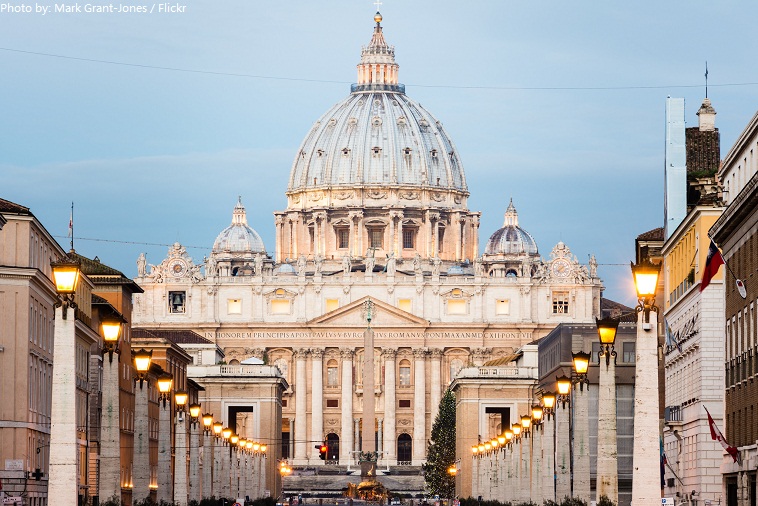
Thumbnail. Click to enlarge.
External View - St. Peter's Square and Colonnade:
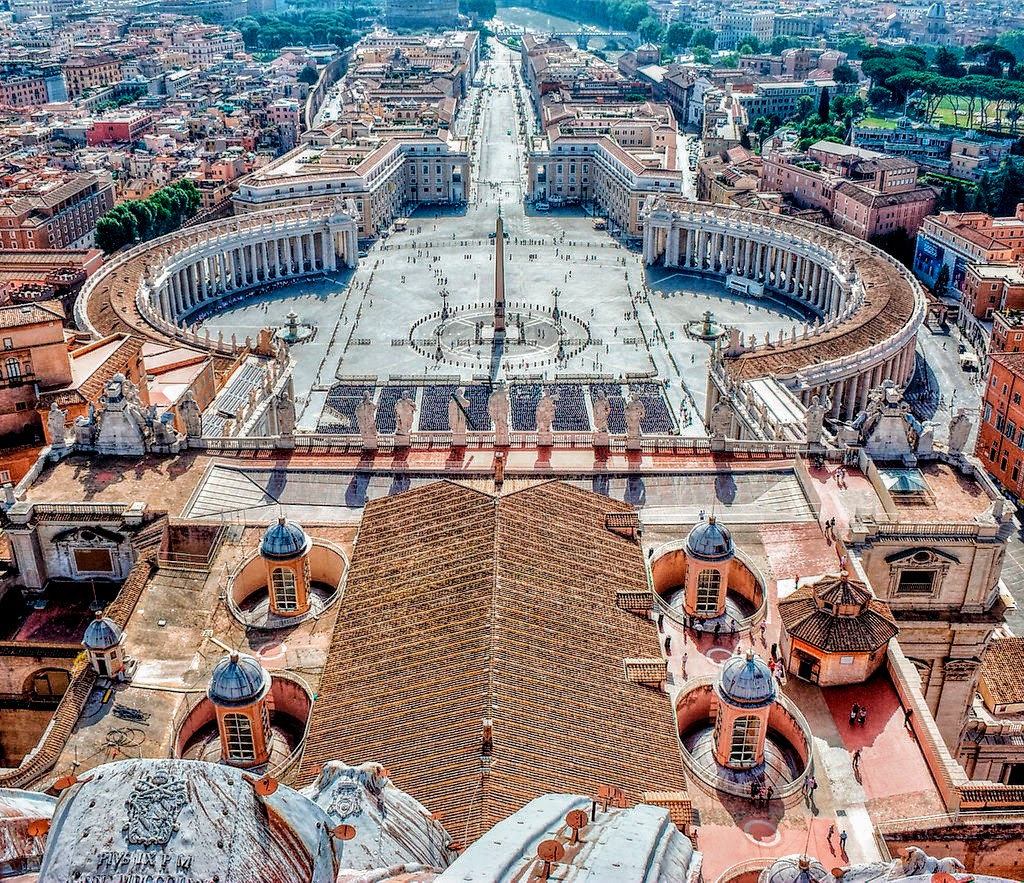
Thumbnail. Click to enlarge.
Central External View - Facade and Obelisk:
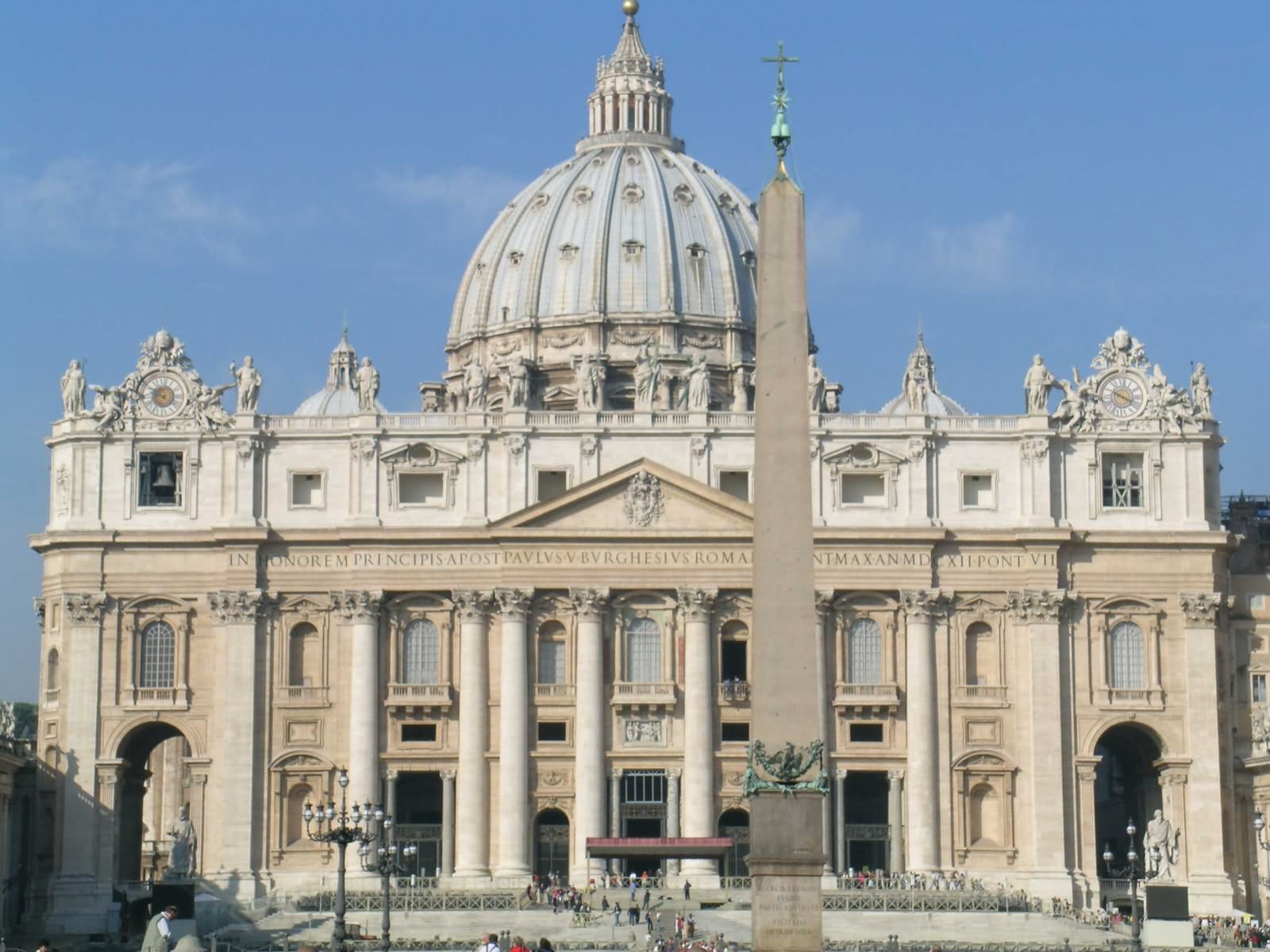
Thumbnail. Click to enlarge.
Interior - Central Nave:
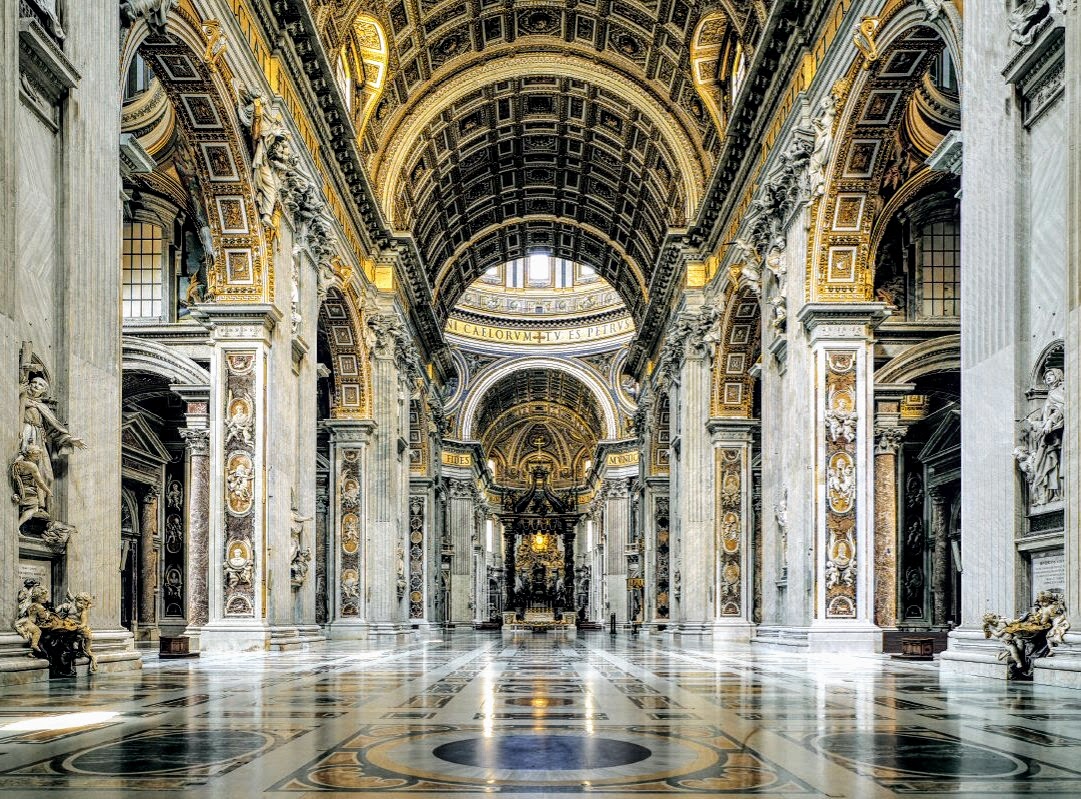
Thumbnail. Click to enlarge.
Interior - Altar and Dome:
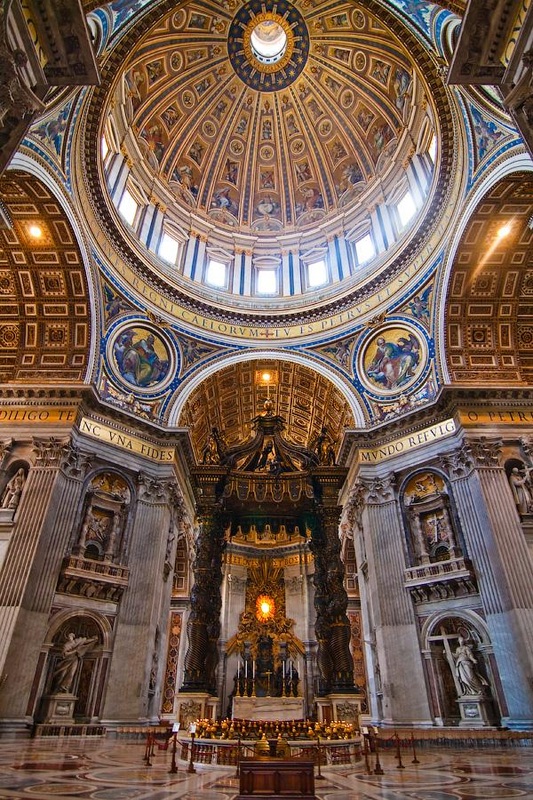
Thumbnail. Click to enlarge.
Interior - Dome and Altar:
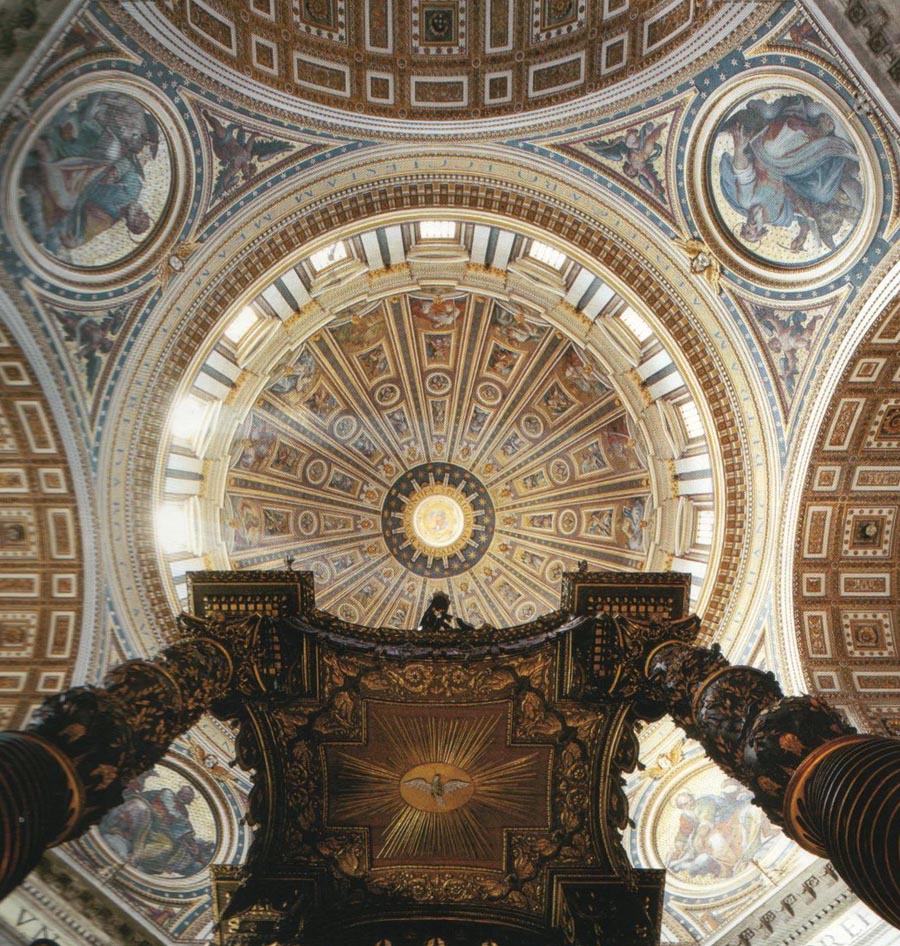
Thumbnail. Click to enlarge.
Interior - South (Left) Transept:
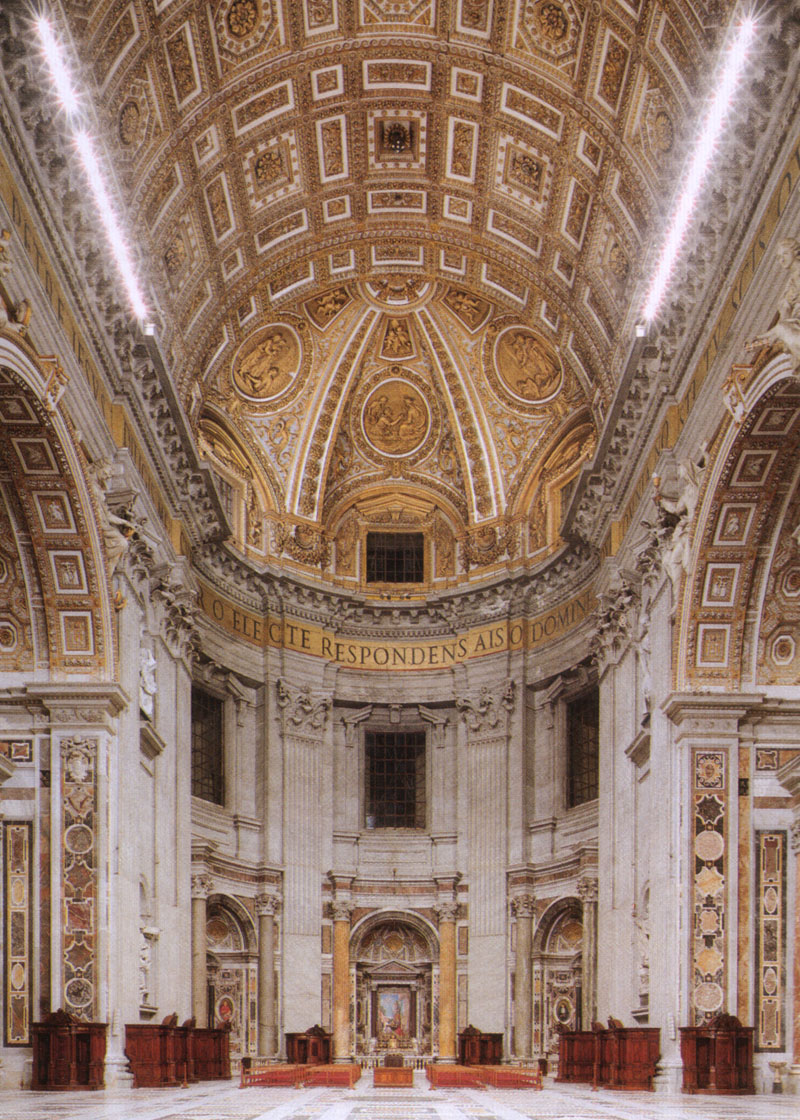
Thumbnail. Click to enlarge.
Interior - North (Right) Transept:
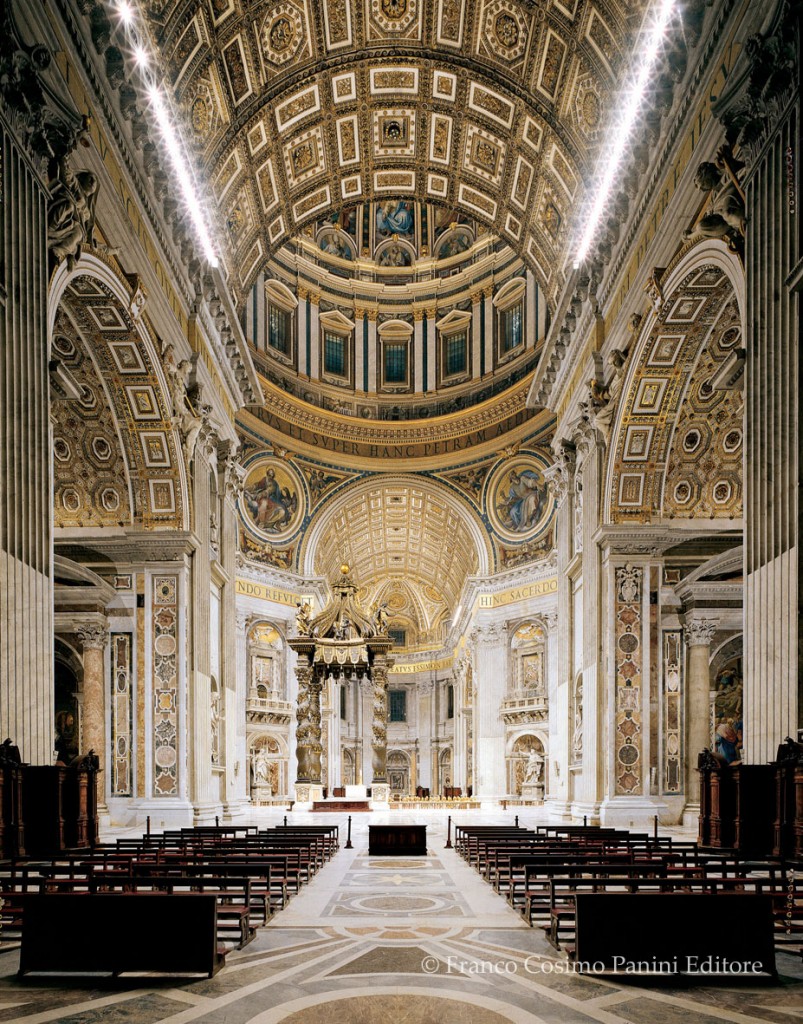
Thumbnail. Click to enlarge.
Interior - Apse and Chair of St. Peter:

Thumbnail. Click to enlarge.
VIRTUAL TOUR: https://www.vatican.va/various/basilich...ex-en.html
VIDEO - WALKING TOUR - VERY HIGH QUALITY: https://www.youtube.com/watch?v=0B54PR2kvWE
VIDEO - EXTENDED GRAND TOUR - VERY HIGH QUALITY: https://www.youtube.com/watch?v=NvjtzKUaq-s
FLOORPLAN, HISTORICAL INFO AND INSIGHTS: http://stpetersbasilica.info/floorplan.htm
HISTORICAL INFO, INSIGHTS AND PHOTOS: http://www.digital-images.net/Gallery/S...s_ext.html
_________________
Best Classical
Best Films
Best Paintings
Last edited by AfterHours on 05/24/2025 17:08; edited 18 times in total
|
|
|
|
AfterHours
Gender: Male
Location: The Zone
|
AfterHours
Gender: Male
Location: The Zone
|
AfterHours
Gender: Male
Location: The Zone
- #114
- Posted: 05/26/2022 22:26
- Post subject:
|
Pieter Bruegel the Elder (circa 1525 - 1569)
Best Works:
7.4/10: Netherlandish Proverbs (1559) [Painting]
7.4/10: The Fight Between Carnival and Lent (1559) [Painting]
7.1/10: Children's Games (1560) [Painting]
6.3/10: The Suicide of Saul (1562) [Painting]
6.6/10: The Fall of the Rebel Angels (1562) [Painting]
7.9/10: The Triumph of Death (circa 1562) [Painting]
6.4/10: Adoration of the Magi in the Snow (1563) [Painting]
7.3/10: Tower of Babel (1563) [Painting]
6.9/10: Dulle Griet (1563) [Painting]
6.0/10: Tower of Babel (after 1563?) [Painting]
7.3/10: The Procession To Calvary (1564) [Painting]
7.2/10: Six Seasons Series: The Gloomy Day (Early Spring); Haymaking (Early Summer); The Harvesters (Late Summer); The Return of the Herd (Autumn); Hunters in the Snow (Winter) (1565) [note: presently a series of 5 out of the original 6 paintings; 1 (Late Spring) is lost] [Painting]
6.4/10: The Census at Bethlehem (1566) [Painting]
5.7/10: The Sermon of Saint John the Baptist (1566) [Painting]
6.8/10: Massacre of the Innocents (circa 1565 - 1567) [Painting]
6.8/10: The Conversion of Saul (1567) [Painting]
5.0/10: Peasant Wedding (1567) [Painting]
5.4/10: Peasant Dance (circa 1568) [Painting]
4.8/10: The Peasant and the Birdnester (circa 1568) [Painting]
Netherlandish Proverbs - Pieter Bruegel the Elder (1559) / Gemäldegalerie, Berlin, Germany [Painting]
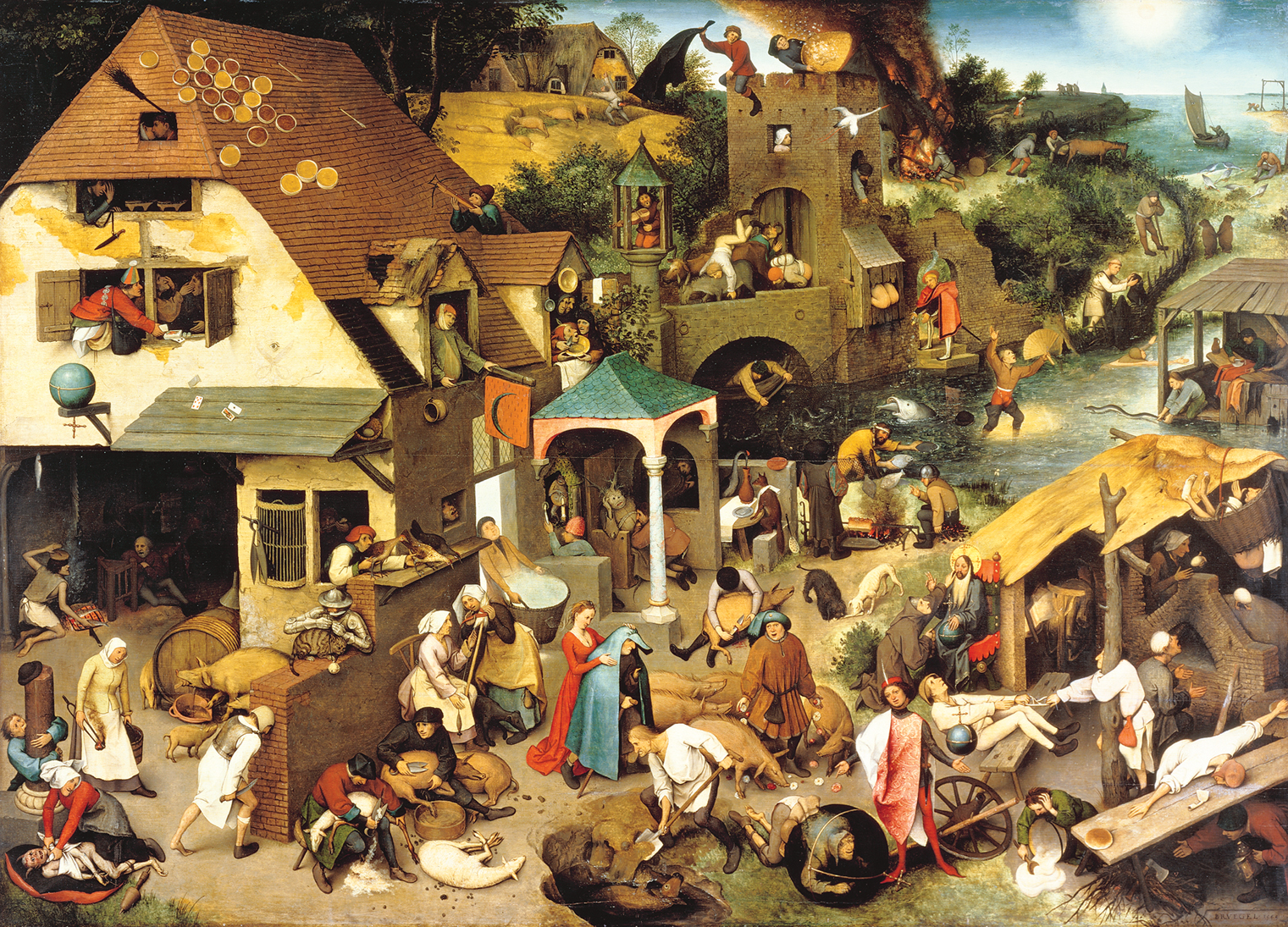
Thumbnail. Click to enlarge.
FULL VIEW - LARGE: http://uploads4.wikiart.org/images/piet...s-1559.jpg
FULL VIEW - HIGHEST QUALITY - ZOOM FUNCTION: https://artsandculture.google.com/asset...ELbQ?hl=en
IMAGE - GEMALDEGALERIE, BERLIN, GERMANY: https://mostperfectworld.files.wordpres...g_2576.jpg
The Fight Between Carnival and Lent - Pieter Bruegel the Elder (1559) / Kunsthistorisches Museum, Vienna, Austria [Painting]

Thumbnail. Click to enlarge.
FULL VIEW - VERY LARGE: https://upload.wikimedia.org/wikipedia/...ruegel_d._Ä._066.jpg
FULL VIEW - VERY LARGE - HIGHEST QUALITY - ZOOM FUNCTION: https://www.insidebruegel.net/#p/v=udro...1:1016,vis
DETAIL - LOWER FAR LEFT CORNER: http://cdn.artboom.info/wp-content/uplo...guitar.jpg
DETAIL - FAR LEFT SIDE: http://cdn.artboom.info/wp-content/uplo...and-Lent-Détail-center-left.jpg
DETAIL - LOWER LEFT/MIDDLE: http://cdn3.artboom.info/wp-content/upl...nkards.jpg
DETAIL - LEFT/MIDDLE: http://cdn3.artboom.info/wp-content/upl...ilated.jpg
DETAIL - UPPER MIDDLE: http://cdn.artboom.info/wp-content/uplo...bottom.jpg
DETAIL - UPPER MIDDLE/RIGHT: http://cdn3.artboom.info/wp-content/upl...-right.jpg
DETAIL - LOWER MIDDLE/RIGHT: http://cdn3.artboom.info/wp-content/upl...ne-one.jpg
DETAIL - MIDDLE/FAR RIGHT: http://cdn.artboom.info/wp-content/uplo...eggars.jpg
Children's Games - Pieter Bruegel the Elder (1560) / Kunsthistorisches Museum, Vienna, Germany [Painting]

Thumbnail. Click to enlarge.
FULL VIEW - ZOOM FUNCTION: https://artsandculture.google.com/asset...2Yjg?hl=en
FULL VIEW - HIGHEST QUALITY - ZOOM FUNCTION: https://insidebruegel.net/#p/v=painting...1:1017,vis
The Suicide of Saul - Pieter Bruegel the Elder (1562) / Kunsthistorisches Museum, Vienna, Germany [Painting]
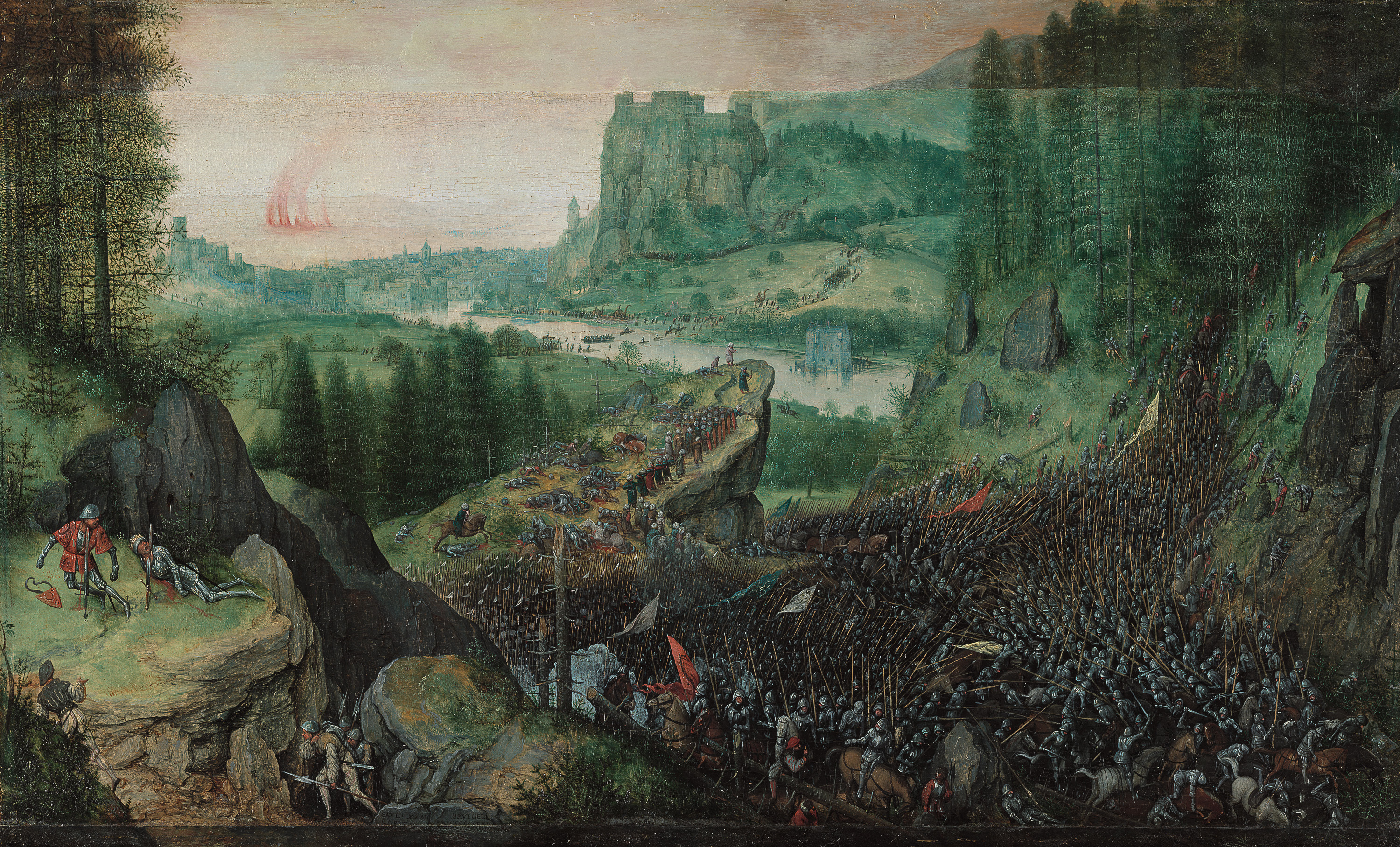
Thumbnail. Click to enlarge.
FULL VIEW - HIGHEST QUALITY - ZOOM FUNCTION: https://insidebruegel.net/#p/v=painting...1:1011,vis
The Fall of the Rebel Angels - Pieter Bruegel the Elder (1562) / Royal Museums of Fine Arts of Belgium, Brussels, Belgium [Painting]
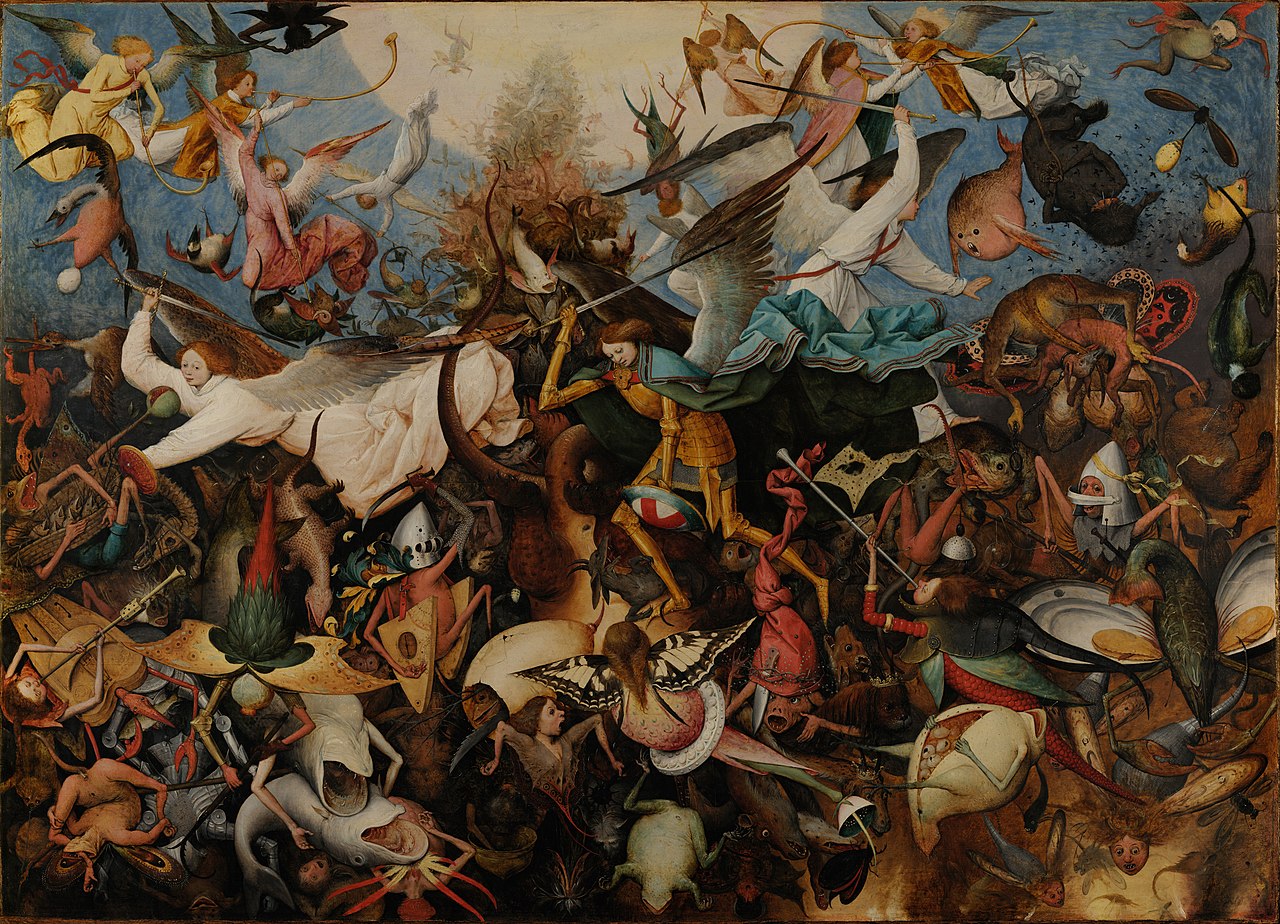
Thumbnail. Click to enlarge.
FULL VIEW - ZOOM FUNCTION: https://artsandculture.google.com/asset...z7tQ?hl=en
The Triumph of Death - Pieter Bruegel the Elder (circa 1562) / Museo del Prado, Madrid, Spain [Painting]
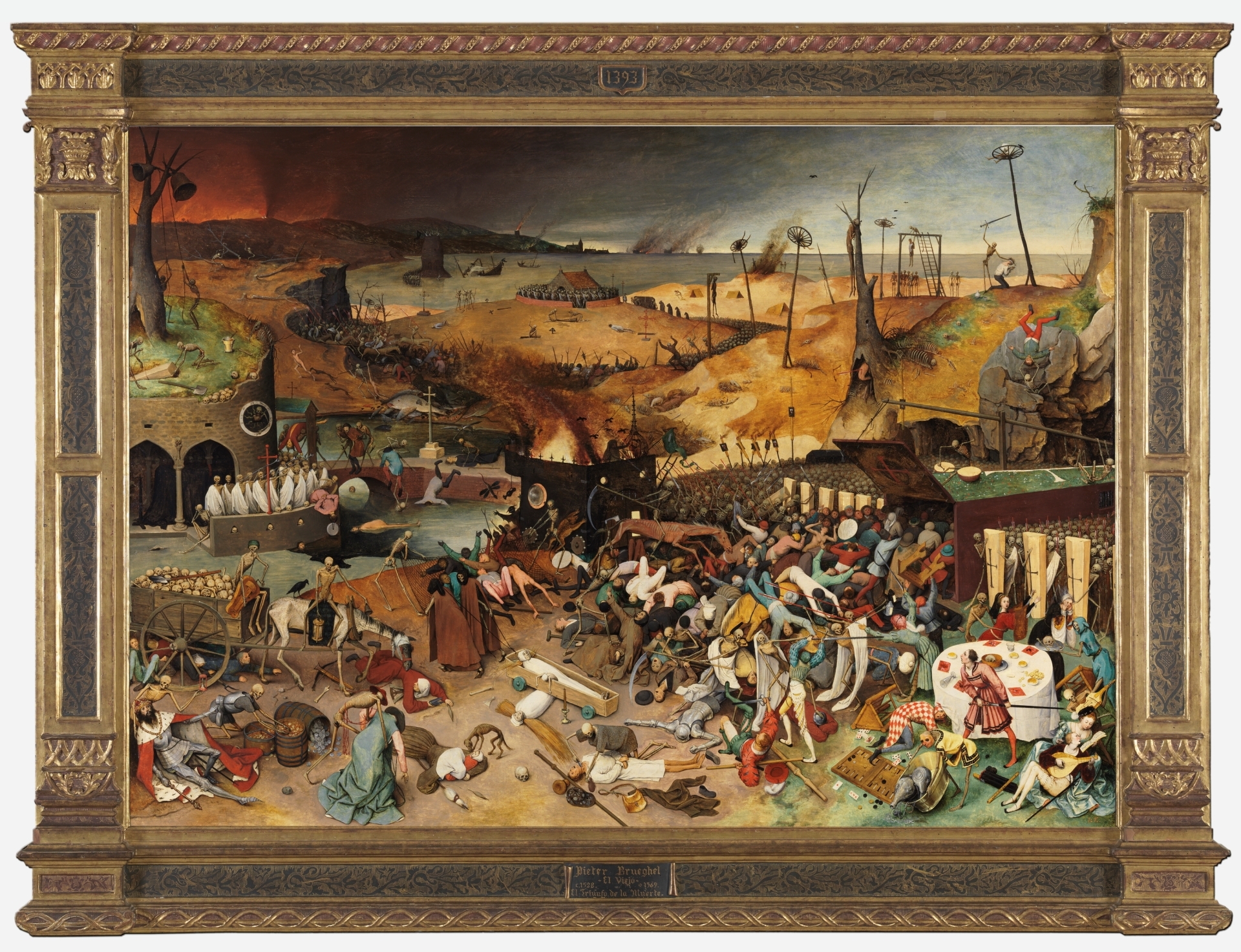
Thumbnail. Click to enlarge.
FULL VIEW - LARGE - HIGHEST QUALITY - ZOOM FUNCTION: https://www.museodelprado.es/en/the-col...ed53196ccc
FULL VIEW - VERY LARGE - MEDIOCRE QUALITY: https://upload.wikimedia.org/wikipedia/...fdeath.jpg
Tower of Babel - Pieter Bruegel the Elder (1563) / Kunsthistorisches Museum, Vienna, Austria [Painting]
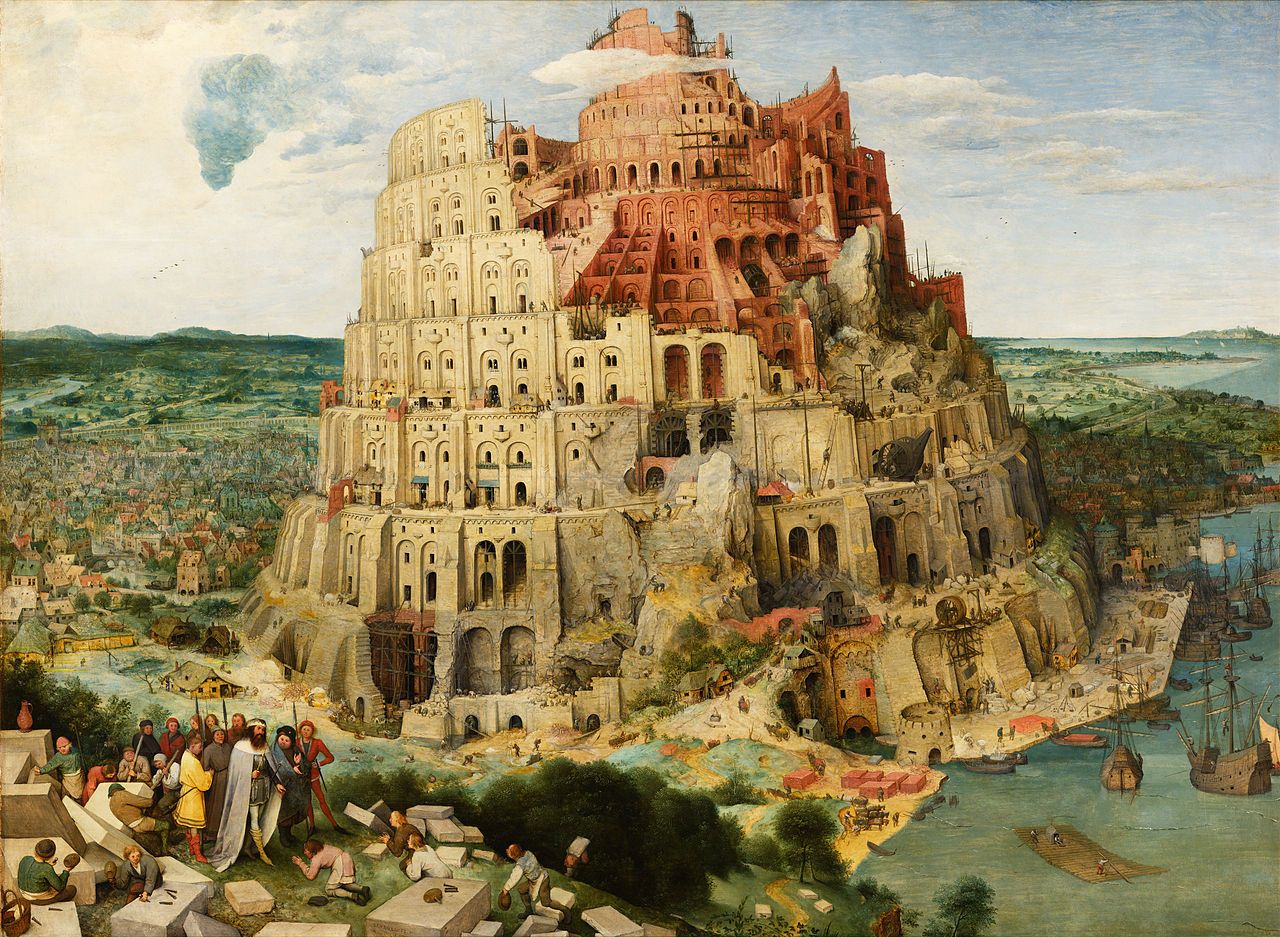
Thumbnail. Click to enlarge.
FULL VIEW - LARGE: https://jhna.org/wp-content/uploads/201...a6.2FI.jpg
FULL VIEW - HIGHEST QUALITY - ZOOM FUNCTION: https://artsandculture.google.com/asset...AhYQ?hl=en
FULL VIEW - HIGHEST QUALITY - VERY LARGE - ZOOM FUNCTION: https://www.insidebruegel.net/#p/v=udro...1:1026,vis
IMAGE - Kunsthistorisches Museum, Vienna: https://c8.alamy.com/comp/EYAJGT/painti...EYAJGT.jpg
--As with many of Bruegel's great works, it features a "pan-visio" God's watchful eye, but is also composed so that (and he would increasingly master this) it "remains composed" while viewed from any angle/perspective, heightened, lowered, side to side (in humble honor of God's vision).
--The painting technique as is always the case with Bruegel, is humble, filled with endless details and an eye's fascination (but also an offering) of countless details/nuances, populated by people who are largely humble persons, or persons of meager stature, peasants and/or tend to be characterized as if on "fool's errands" (a far cry from the sort of elevated, idealized characterizations from that of contemporary Italy for example)
--The massive central Tower of Babel is architecturally structured and stylized by Bruegel similarly to the Roman Colosseum, therefore echoing how it was thought to be an attempt at hubris (and a site of much persecution of Christians). The structure itself is a duality between building in an upward progression and that of upended progress or failure or self-destruction
--it features minute, endless details of its construction, of its construction workers, of the details and inner skeleton of its architecture, of their means of construction, etc, which expands on the already monumental educational details of Bruegel already featured in his variety of works before this. This also highlights the attention to overwhelming detail paid by the King and the workers to this massive structure while all else being subordinate
--In these details, one sees that the Tower is already tipping (harbinger of collapse) to the left, a warning to its future
--One also sees that the Tower, its structure, is in a back and forth struggle of its construction, which symbolically appears to be replacing the earth (a metaphor for Man attempting to replace God, the Earth he already has there). In several parts there is unfinished and unremoved Earth/rock/materials in between its finished parts, a compositional jostling between these two extremes.
--the future collapse/failure is further symbolized by all the unused stones and pieces that surround the work. Even while these are probably there to still be used, this also echoes the crumbling, collapsing, failing nature of the project.
--the houses and ships and all the land surround are but minor in comparison, highlighting the sheer hubris of the King
--The King is parallel to the Tower in the forefront (lower left corner) of the painting. He is aligned to the Tower perfectly in his pose and counter-pointed with its tipping inclination. The Tower is a symbol of his hubris and he thinking he is God or can replace God. Citizen's/workers meekly bow before him as if he is a God.
--The King's failure and God's command are foreshadowed in this act with unused blocks having (symbolically) "crumbled" around him like they will (and are also foreshadowed to) with the Tower
--the overall composition follows the path with the city in the lower lands surrounding the tower, meek and humble next to it (in humility and service of God) to the tower which is composed not just as a structure but as an upward spiraling symbolic path to, while increasing in ascension to meet or match God, increases in hubris, and increasing ruin and wreckage and failure, commensurately struggling against the Earth (that God already put there) in conflict with Him as the King's attempted command to overstep God
-Furthermore, the structure already being worked on and in the reach towards the top and the building of it has taken place, ahead of, in many cases, ahead of the completion of the lower and earlier foundations and structures of the tower, also symbolic of the hubris (wanting to reach the top, Heaven, surpass God, without completing earlier steps, lowering oneself to Him first)
-There is further meaning, duality, dichotomy in the workers, the lower class and peasants (depicted almost entirely as "dotted" figures from a great distance, pawns in a grand schematic) that toil the land for the king in that they are both building the Tower but also perhaps circumventing its success (consciously or not, by their own will or by the unseen and wholly natural force of God). The success of its construction is alluded to both by its pending downfall, a harbinger of its fate (it bends to the left) but also in its earthen bulges (again, mentioned earlier) erupting and molded within the incomplete structure and foundation (the earth, the soil, the land is the place and work of the peasants and the lower class symbolically interrupting the structure, consciously or not). Natually, the King, in his hubris, appears completely unaware of this, while the workers/peasants/lower class continue along towards building upward for him
-This strikes a commentary on Humanism and/or the will of God, or in that Humanism is also the Will of God and founded in it, and not to be thought of, treated, too far separate from it (a duality, quandary, commentary, subtly imbued within many of Bruegel's paintings). It is conveyed in both the plight (or might) of the workers/peasants/lower class in conjunction to the King, perilously (unbeknownst to him, fraught by his own hubris, unaware of his stupidity) aligned to the Tower's construction compositionally (by direct and parallel angel and disposition) and from which the whole painting (at ground level to, encircling the tower and spiraling to its top) leads from (in his eyes, at the front of the frame, but is actually under the perspective beyond the frame that we get to inhabit, of that of a God's eye observer). And this relay, this duality, between free will, humanism and God's will, is conveyed in every substantial thematic strand and visualization of the work (each element means both, questions between them, at the same time).
-In other words, the act of building the Tower by the peasants/lower class shows BOTH astounding ingenuity, free will, working with the earth, moving it to one's will and needs to produce an astonishing structure that apparently surpasses the clouds (heaven, God) AND the figures are depicted as but dots or pawns in a massive scheme "from God's eye" or ALSO "peons under the command of the king" or ALSO engaged in their own knowing and incredibly organized circumventing of his plans in the humble service of God. It is all of these meanings or views simultaneously, and each one is explainable on its own as to why each facet is visualized, depicted that way.
-It depicts human folly, but it does so humbly without severe judgment. ... Add further comment on Calvinists/Humanism?
-The technique applied, subject, visualization, composition is a dichotomy and struggle with the humble, peasant, human spirit of the peasant and of the average pious citizen (the workers, the peasants, making ends meet) and the King's hubris in erecting such a monstrous tribute to himself in the face of God and such humility (and his abuse and use of his power to use those of real faith in service of himself). Thus it is also political commentary of its time (and can still echo'd and relevant today in both politics and modern architecture, cities, infrastructure, commerce).
-The Tower is symbol of God's judgment and the sheer scale of the Tower emphasizes mankind's smallness before Divine Judgment.
-The Tower in its multitude of figures (who at a glance appear working all together in a massive organization, and can be argued in many ways to be doing so) are also in many cases (and even in cases where at a glance a coordinated team effort could be said to be taking place) are yet shown to be each completing individual and separated (sometimes blatantly follied) tasks and in a massive network of follied humanity. This is metaphorically alluded by all the different types of actions taking place from the sea with people climbing the masts and sails as they set course or arrive to dock to the top of the tower where people are walking up ramps or doing some work on the perimeter (etc). The segregation subtly alluded between acts like these by not just the disconnection of actions all around or upon the same project but by the fact of showing it populated by faceless "dots" that have no specifications and personality except smallness, meekness, folly; the closer one inspects and views them the more they appear as faceless, lonely, individuated, minor, follied (aimless, solo, interchangeable, faceless even where they are within groupings that appear to be in mutual coordination) -- wandering, anonymous figures, even "faceless ghosts", against the overwhelming vastness of the cosmos and God's will (in comparison, also to the chaotic semblance and failing construction of their monumental creation versus God's will). As already mentioned, for instance, the parts of the tower lower than its completed parts that are yet in ruins or incomplete and other parts that seem completely unplanned against the rock in its place, actions and work that seem confused as to be as much in the service of building upwards (in vain) as they are in (intentionally or not) ruining the structure and ensuring its downfall. This is a metaphor (all the different actions being performed, each figure in solitude, anonymous, wandering, "segregated") for God's punishment, which will be to separate humanity by a multitude of languages and spread them across the world into divisions and cultures.
-The even spread of the city all the way out to its perimeter wall, blocked off from the rest of humanity and leaving another endless spread of God's nature (more or less "untouched" except by peasants/farmers here and there) blocked and segregated outside of it, is a further metaphor for how God, as punishment for the Tower, separated humanity, and how the humanity enclosed in the city, the progress of the city, the painting within the painting, remains ignorant of God (the endless, largely "untouched" scope of nature, beyond its walls, within which is only populated by an endless mass of itself and capped by the absurdly large hubris of the Tower). This outer vastness of land, still in touch with God, is likely a subtle ode to the peasants and farmers Bruegel will increasingly give credence to for the rest of his career, propagating a new or very under-represented genre: the genre painting, that of ordinary people and lives (that the likes of Vermeer will master several decades later).
-The spiral of the tower leads nowhere. It is a circle continuously upward with no end except failure (just another circle upward), the peak being in ruin, symbolizing the endless cycle of man's failure if he does not accept God for his salvage and attempts instead to ignore, usurp or do so without Him. It is also shown to be a confusing labyrinth with people not just representing workers, but also symbolizing a humanity entering and climbing about it, in windows and through doors to nowhere in their blind quest to usurp God without faith, leading to meaningless follied lives going nowhere but the false prophet of hubris and ambition.
-In utilizing present day machinery and the Roman Colosseum of Italy (cranes, pulleys, etc) Bruegel's naturalism grounds the construction in the reality of present day Antwerp (along with those nods to the hubris of Rome, Italy) emphasizing the present day progress as in vain and in forgoing the true spirit of humanity, letting his ambition usurp his acceptance and following of God
The Adoration of the Magi in the Snow - Pieter Bruegel the Elder (1563) / Am Römerholz, Winterthur, Switzerland [Painting]

Thumbnail. Click to enlarge.
FULL VIEW - HIGHEST QUALITY - ZOOM FUNCTION: https://insidebruegel.net/#p/v=painting...1:9000,vis
Dulle Griet - Pieter Bruegel the Elder (1563) / Museum Mayer van den Bergh, Antwerp, Belgium [Painting]

Thumbnail. Click to enlarge.
FULL VIEW - HIGHEST QUALITY - ZOOM FUNCTION: https://insidebruegel.net/#p/v=painting...1:9001,vis
Tower of Babel - Pieter Bruegel the Elder (after 1563?) / Museum Boijmans Van Beuningen, Dijkzigt, Rotterdam, Netherlands [Painting]

Thumbnail. Click to enlarge.
FULL VIEW - HIGHEST QUALITY - ZOOM FUNCTION: https://insidebruegel.net/#p/v=painting...1:9002,vis
The Procession To Calvary - Pieter Bruegel the Elder (1564) / Kunsthistorisches Museum, Vienna, Austria [Painting]

Thumbnail. Click to enlarge.
FULL VIEW - HIGHEST QUALITY - ZOOM FUNCTION: https://www.khm.at/objektdb/detail/324
FULL VIEW - HIGHEST QUALITY - VERY LARGE - ZOOM FUNCTION: https://www.insidebruegel.net/#p/v=udro...1:1025,vis
IMAGE - Kunsthistorisches Museum Wien: https://cdn.theculturetrip.com/wp-conte...a5m0cn.jpg
Six Seasons Series - Pieter Bruegel the Elder (1565) / The Gloomy Day (Early Spring): Kunsthistorisches Museum, Vienna, Austria; Haymaking (Early Summer): Prague Castle, Prague, Czech Republic; The Harvesters (Late Summer): Metropolitan Museum of Art, New York, USA; The Return of the Herd (Autumn): Kunsthistorisches Museum, Vienna, Austria; Hunters in the Snow (Winter): Kunsthistorisches Museum, Vienna, Austria [note: series was originally planned and arranged together as a series in a single room; presently includes 5 out of the original 6 paintings; 1 (Late Spring) is lost] [Painting]
The Gloomy Day (Early Spring):

Thumbnail. Click to enlarge.
Haymaking (Early Summer):

Thumbnail. Click to enlarge.
The Harvesters (Late Summer):

Thumbnail. Click to enlarge.
Return of the Herd (Autumn):

Thumbnail. Click to enlarge.
Hunters in the Snow (Winter):

Thumbnail. Click to enlarge.
FULL VIEW - THE GLOOMY DAY - HIGHEST QUALITY - ZOOM FUNCTION: https://insidebruegel.net/#p/v=painting...1:1837,vis
FULL VIEW - HAYMAKING - HIGHEST QUALITY - ZOOM FUNCTION: https://insidebruegel.net/#p/v=painting...1:9003,vis
FULL VIEW - THE HARVESTERS - HIGHEST QUALITY - ZOOM FUNCTION: https://insidebruegel.net/#p/v=painting...1:9004,vis
FULL VIEW - RETURN OF THE HERD - HIGHEST QUALITY - ZOOM FUNCTION: https://insidebruegel.net/#p/v=painting...1:1018,vis
FULL VIEW - HUNTERS IN THE SNOW - HIGHEST QUALITY - ZOOM FUNCTION: https://insidebruegel.net/#p/v=painting...1:1838,vis
The Census at Bethlehem - Pieter Bruegel the Elder (1566) / Oldmasters Museum, Brussels, Belgium [Painting]

Thumbnail. Click to enlarge.
FULL VIEW - HIGHEST QUALITY - ZOOM FUNCTION: https://artsandculture.google.com/asset...ZEog?hl=en
The Sermon of St. John the Baptist - Pieter Bruegel the Elder (1566) / Museum of Fine Arts, Budapest, Hungary [Painting]

Thumbnail. Click to enlarge.
FULL VIEW - ZOOM FUNCTION: https://artsandculture.google.com/asset...mvnQ?hl=en
The Massacre of the Innocents - Pieter Bruegel the Elder (circa 1566 - 1567) / British Royal Collection, Windsor Castle, Royal County of Berkshire, England [Painting]
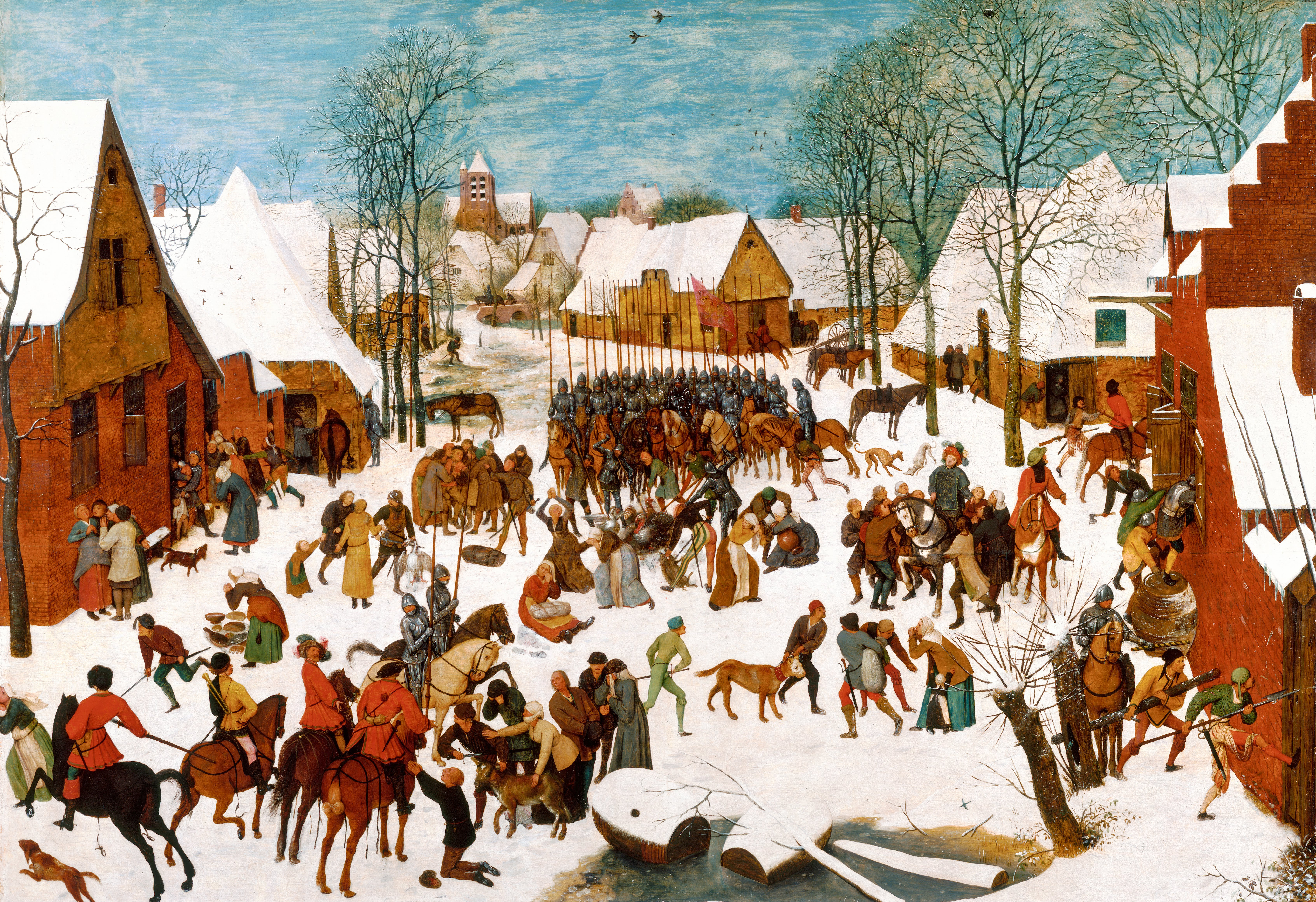
Thumbnail. Click to enlarge.
FULL VIEW - ZOOM FUNCTION: https://artsandculture.google.com/asset...aabw?hl=en
COMPARING ORIGINAL WITH LATER VIENNA VERSION: https://beyondarts.at/guides/en/kunsthi...ng-scenes/
FULL VIEW - LATER "VIENNA" VERSION (probably by Pieter Bruegel the Elder and his workshop) - FOR THE ORIGINAL DETAILS BEFORE OVER-PAINTING (featuring murdered children instead of over-painted as killed animals, or ransacked food, etc): https://www.khm.at/en/artworks/massacre...ocents-332
FULL VIEW - LATER "VIENNA" VERSION (probably by Pieter Bruegel the Elder and his workshop) - FOR THE ORIGINAL DETAILS BEFORE OVER-PAINTING (featuring murdered children instead of over-painted as killed animals, or ransacked food, etc): https://weiterzugehen.net/wp-content/up...123205.jpg
FULL VIEW - ZOOM FUNCTION - LATER COPY (Pieter Bruegel The Younger) - FOR THE ORIGINAL DETAILS BEFORE OVER-PAINTING (featuring murdered children instead of over-painted as killed animals, or ransacked food, etc): https://artsandculture.google.com/asset...M93g?hl=en
The Conversion of Saul - Pieter Bruegel the Elder (1567) / Kunsthistorisches Museum, Vienna, Austria [Painting]

Thumbnail. Click to enlarge.
FULL VIEW - HIGHEST QUALITY - ZOOM FUNCTION: https://insidebruegel.net/#p/v=painting...1:3690,vis
Peasant Wedding - Pieter Bruegel the Elder (1567) / Kunsthistorisches Museum, Vienna, Austria [Painting]
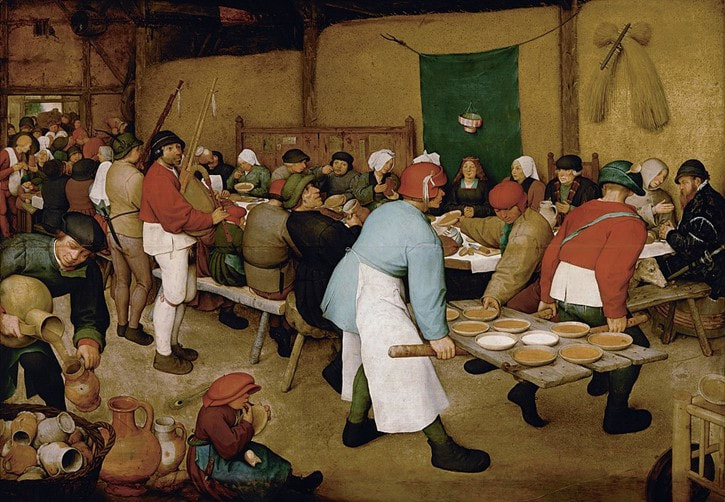
Thumbnail. Click to enlarge.
FULL VIEW - VERY LARGE: https://upload.wikimedia.org/wikipedia/...ject_2.jpg
Peasant Dance - Pieter Bruegel the Elder (circa 1568) / Kunsthistorisches Museum, Vienna, Austria [Painting]
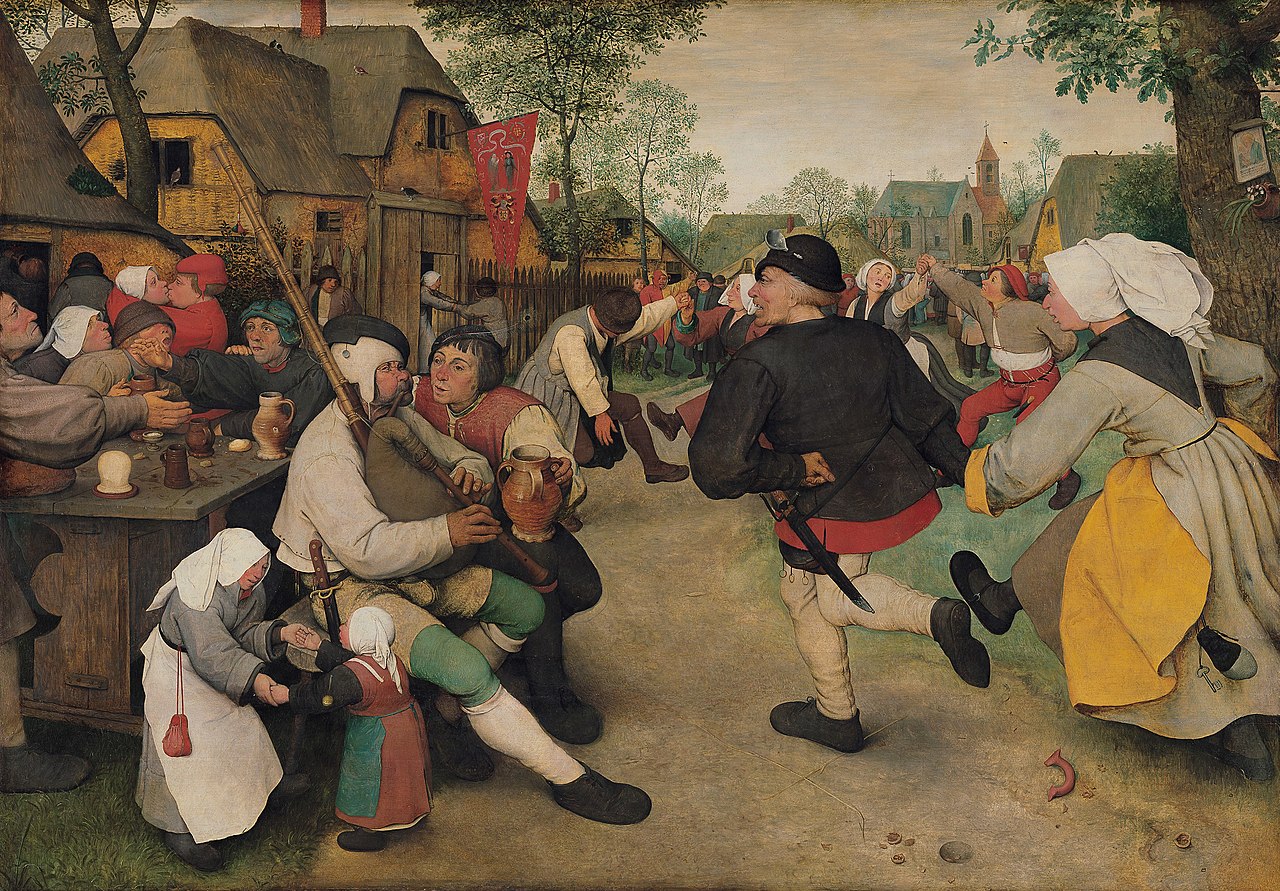
Thumbnail. Click to enlarge.
FULL VIEW - VERY LARGE: https://upload.wikimedia.org/wikipedia/...GA3499.jpg
The Peasant and the Birdnester - Pieter Bruegel the Elder (1568) / Kunsthistorisches Museum, Vienna, Austria [Painting]

Thumbnail. Click to enlarge.
FULL VIEW - VERY LARGE: https://upload.wikimedia.org/wikipedia/..._1568.jpeg
_________________
Best Classical
Best Films
Best Paintings
Last edited by AfterHours on 06/28/2025 01:18; edited 38 times in total
|
|
|
|
AfterHours
Gender: Male
Location: The Zone
|
AfterHours
Gender: Male
Location: The Zone
|
AfterHours
Gender: Male
Location: The Zone
- #117
- Posted: 05/26/2022 23:13
- Post subject:
|
Vincent van Gogh (1853 - 1890)
Best Works:
4.3/10: Still Life with Cabbage and Clogs (1881)
3.3/10: Boy With A Sickle (1881)
4.1/10: Girl in a Wood (1882)
5.4/10: Beach at Scheveningen in Stormy Weather (1882)
5.1/10: Bleaching Ground at Scheveningen (1882)
4.5/10: Farm with Stacks of Peat (1883)
7.0/10: The Potato Eaters (1885)
5.6/10: Self-Portrait with Felt Hat (1886 - 1887)
5.9/10: Sunflowers (1887) [New York Version]
5.7/10: Sunflowers (1887) [Switzerland Version]
6.7/10: Self-Portrait with Straw-Hat (1887)
6.9/10: Self-Portrait (1887) [Joseph Winterbotham Collection]
7.1/10: Self-Portrait with Grey Felt-Hat (1887)
6.9/10: Self-Portrait (1887) [Paris]
7.1/10: Self-Portrait with a Straw Hat (obverse: The Potato Peeler) (1887)
6.8/10: Self-Portrait as a Painter (1887 - 1888)
6.3/10: The Poet's Garden (1888)
6.5/10: Bedroom in Arles (1888)
6.4/10: Cafe Terrace at Night (1888)
6.7/10: Starry Night Over the Rhone (1888)
6.7/10: Portrait of a Peasant (Patience Escalier) (1888)
6.8/10: The Night Cafe (1888)
6.9/10: Sunflowers (1888) [3rd Version, Munich]
6.6/10: Sunflowers (1888) [4th Version, London]
6.4/10: Self-Portrait with Bandaged Ear (1889)
6.8/10: Irises (1889)
7.8/10: The Starry Night (1889)
7.3/10: Wheat Field With Cypresses (1889)
7.4/10: Cypresses (1889)
6.9/10: Enclosed Field with Rising Sun (1889)
6.0/10: Landscape with Wheat Sheaves and Rising Moon (1889)
7.0/10: Self-Portrait (1889)
6.3/10: Cypresses with Two Figures - Vincent van Gogh (1889 - 1890)
5.7/10: First Steps, after Millet - Vincent van Gogh (1890)
7.0/10: The Church at Auvers (1890)
7.0/10: Wheatfield with Crows (1890)
7.3/10: Road with Cypress and Star (1890)
6.6/10: Cypresses and Two Women (1890)
6.0/10: Street in Auvers-sur-Oise - Vincent van Gogh (1890; Probably unfinished upon death)
Still Life with Cabbage and Clogs (1881) - Vincent van Gogh (1881) / Van Gogh Museum, Amsterdam, Netherlands [Painting]

Thumbnail. Click to enlarge.
FULL VIEW - VERY HQ - ZOOM FUNCTION: https://www.vangoghmuseum.nl/nl/collectie/s0137V1962
Boy With a Sickle - Vincent van Gogh (1881) / Kröller-Müller Museum, Otterlo, Netherlands [Painting]

Thumbnail. Click to enlarge.
FULL VIEW - MEDIUM: https://krollermuller.nl/en/vincent-van...h-a-sickle
Girl in a Wood - Vincent van Gogh (1882) / Kröller-Müller Museum, Otterlo, Netherlands [Painting]

Thumbnail. Click to enlarge.
FULL VIEW - MEDIUM: https://krollermuller.nl/en/vincent-van...n-a-wood-1
Beach at Scheveningen in Stormy Weather - Vincent van Gogh (1882) / Van Gogh Museum, Amsterdam, Netherlands [Painting]
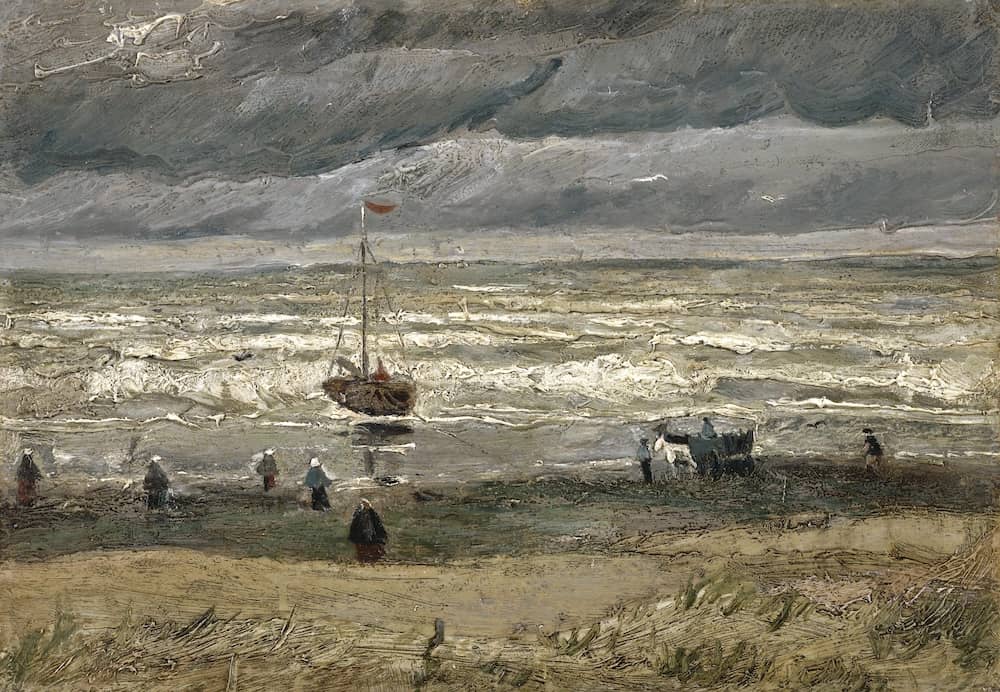
Thumbnail. Click to enlarge.
FULL VIEW - VERY LARGE: https://upload.wikimedia.org/wikipedia/...Museum.jpg
Bleaching Ground at Scheveningen - Vincent van Gogh (1882) / Getty Museum [Painting]
FULL VIEW - VERY HQ - ZOOM FUNCTION: https://www.getty.edu/art/collection/object/107VTT
Farm with Stacks of Peat - Vincent van Gogh (1883) / Van Gogh Museum, Amsterdam, Netherlands [Painting]

Thumbnail. Click to enlarge.
FULL VIEW - ZOOM FUNCTION: https://artsandculture.google.com/asset...gbEg?hl=en
The Potato Eaters - Vincent van Gogh (1885)
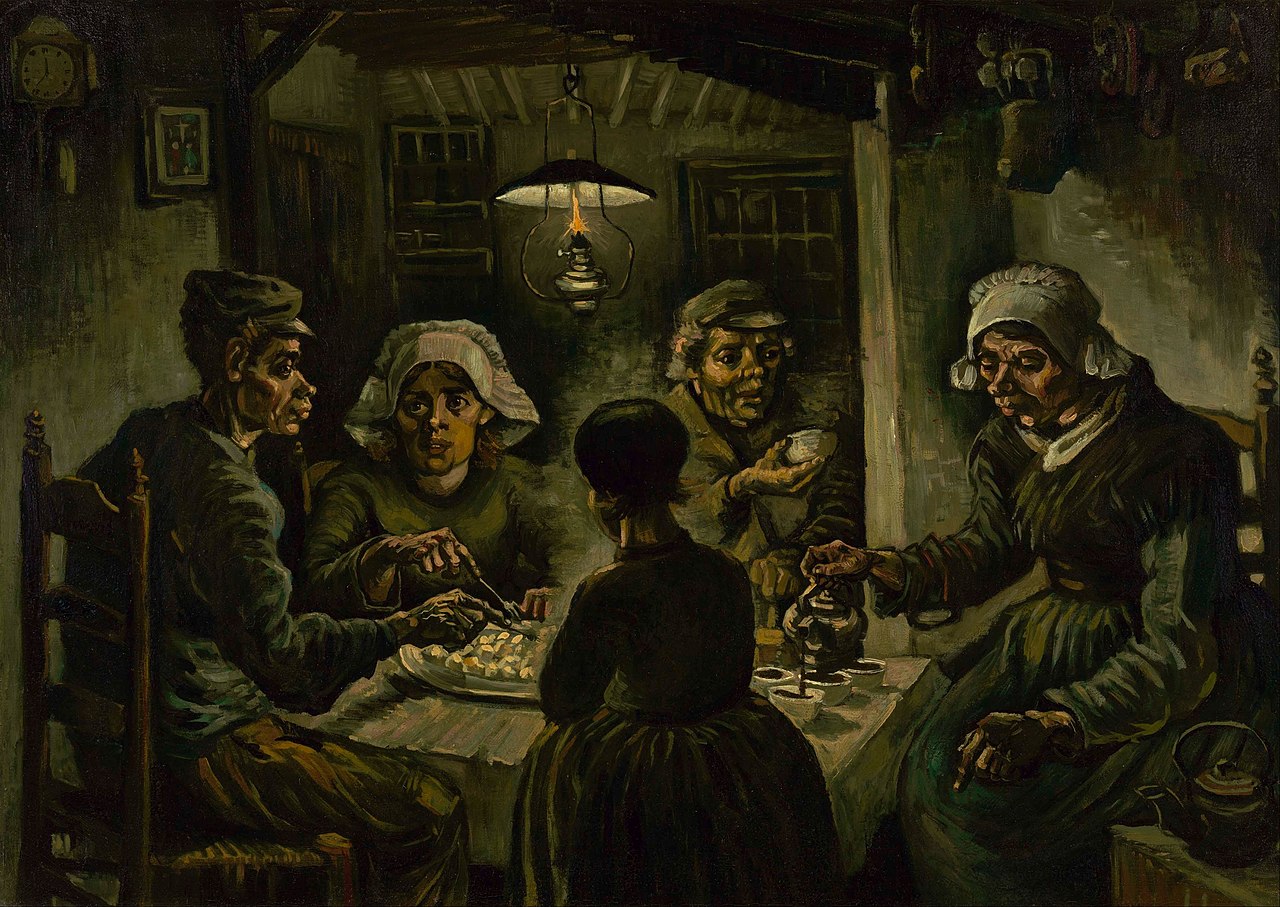
Thumbnail. Click to enlarge.
FULL VIEW - VERY LARGE: https://upload.wikimedia.org/wikipedia/...-03850.jpg
FULL VIEW - VERY HQ - ZOOM FUNCTION: https://www.vangoghmuseum.nl/en/collection/s0005v1962
Self-Portrait with Felt Hat - Vincent van Gogh (1886 - 1887) / Van Gogh Museum, Amsterdam, Netherlands [Painting]
.jpg)
Thumbnail. Click to enlarge.
FULL VIEW - MEDIUM: https://www.meisterdrucke.us/kunstwerke...428%29.jpg
Sunflowers - Vincent van Gogh (1887) / Metropolitan Museum of Art, New York, USA [Painting]
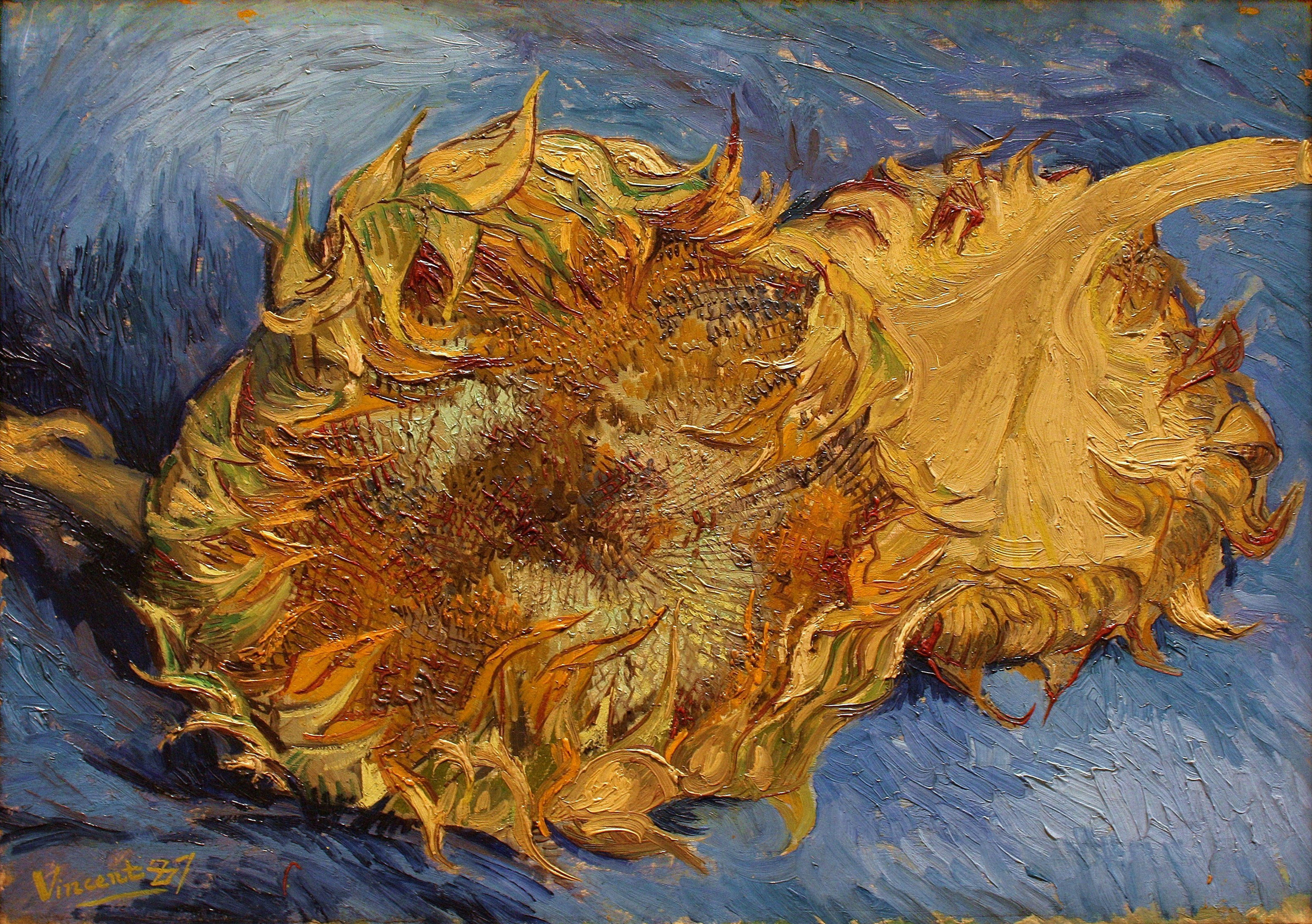
Thumbnail. Click to enlarge.
FULL VIEW - ZOOM FUNCTION: https://artsandculture.google.com/asset...vUnA?hl=en
FULL VIEW - VERY HQ - ZOOM FUNCTION: https://www.metmuseum.org/art/collection/search/436524
Sunflowers - Vincent van Gogh (1887) / Museum of Fine Arts, Bern, Switzerland [Painting]

Thumbnail. Click to enlarge.
FULL VIEW - LARGE: https://www.flickr.com/photos/mbell1975/7847211032
Self-Portrait with Straw-Hat - Vincent van Gogh (1887) / Detroit Institute of Arts, Detroit, Michigan, USA [Painting]

Thumbnail. Click to enlarge.
FULL VIEW - VERY LARGE: https://upload.wikimedia.org/wikipedia/...etroit.jpg
FULL VIEW - VERY LARGE: https://dia.org/sites/default/files/202...rait-1.jpg
Self-Portrait - Vincent van Gogh (1887) / The Art Institute of Chicago, Joseph Winterbotham Collection, Chicago, USA [Painting]

Thumbnail. Click to enlarge.
FULL VIEW - LARGE: https://www.reddit.com/r/vangogh/commen.../#lightbox
PHOTOS - FULL VIEW - LARGE & VERY LARGE: https://www.flickr.com/photos/34540417@...otostream/
FULL VIEW - VERY LARGE: https://upload.wikimedia.org/wikipedia/...045%29.jpg
FULL VIEW - ZOOM FUNCTION: https://artsandculture.google.com/asset...J4_w?hl=en
FULL VIEW - VERY HQ - ZOOM FUNCTION: https://www.artic.edu/artworks/80607/self-portrait
Self-Portrait with Grey Felt-Hat - Vincent van Gogh (1887) / [Painting]
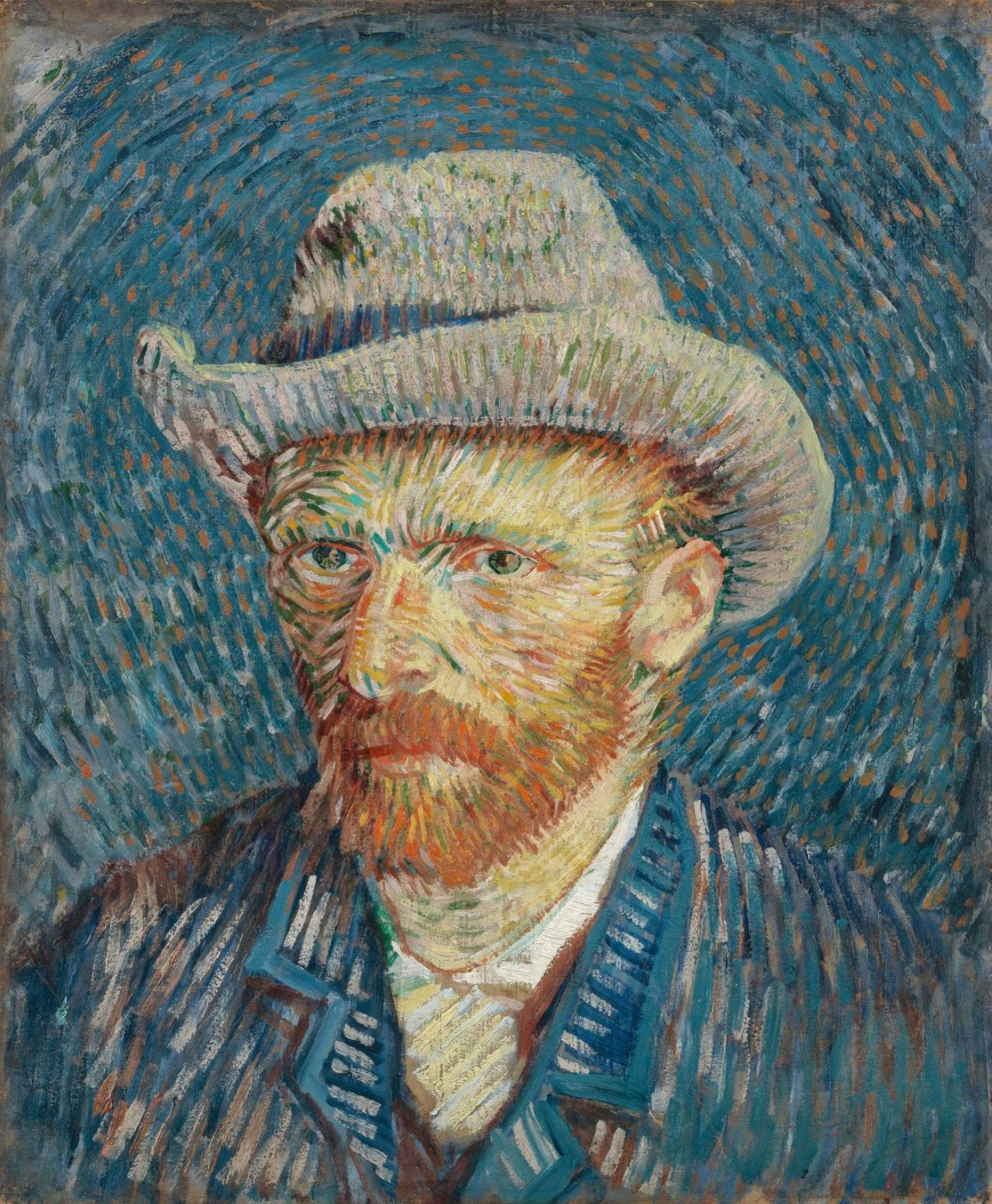
Thumbnail. Click to enlarge.
FULL VIEW - MEDIUM: https://i0.wp.com/hyperallergic-newspac...&ssl=1
FULL VIEW - LARGE: https://upload.wikimedia.org/wikipedia/...n_Gogh.jpg
FULL VIEW - VERY LARGE: https://upload.wikimedia.org/wikipedia/...n_Gogh.jpg
FULL VIEW - VERY HQ - ZOOM FUNCTION: https://www.vangoghmuseum.nl/en/collection/s0016V1962
Self-Portrait - Vincent van Gogh (1887) / Museo d'Orsay, Paris, France [Painting]

Thumbnail. Click to enlarge.
FULL VIEW - VERY LARGE: https://upload.wikimedia.org/wikipedia/...n_Gogh.jpg
Self-Portrait with a Straw Hat (obverse: The Potato Peeler) - Vincent van Gogh (1887)

Thumbnail. Click to enlarge.

Thumbnail. Click to enlarge.
FULL VIEW - LARGE: https://upload.wikimedia.org/wikipedia/...of_Art.jpg
FULL VIEW - ZOOM FUNCTION: https://www.metmuseum.org/art/collection/search/436532
Self-Portrait as a Painter (1887 - 1888) / Van Gogh Museum, Amsterdam, Netherlands [Painting]

Thumbnail. Click to enlarge.
FULL VIEW - VERY LARGE: https://upload.wikimedia.org/wikipedia/...n_Gogh.jpg
FULL VIEW - VERY HQ - ZOOM FUNCTION: https://www.vangoghmuseum.nl/en/collect...1962?_gl=1*1ebbx0s*_up*MQ..*_gs*MQ..&gclid=EAIaIQobChMI8_mOz-SRjgMVZSNECB2CgzNtEAAYASAAEgJ9X_D_BwE&gbraid=0AAAAADhviGX7rDK_3-XbLAueK6rUE9Po5
The Poet's Garden - Vincent van Gogh (1888) / Art Institute of Chicago, Mr. and Mrs. Lewis Larned Coburn Memorial Collection, Chicago, Illinois, USA [Painting]

Thumbnail. Click to enlarge.
FULL VIEW - MEDIUM: https://upload.wikimedia.org/wikipedia/...%2C_01.jpg
FULL VIEW - LARGE: https://www.flickr.com/photos/mbell1975/7624680362
FULL VIEW - VERY LARGE: https://upload.wikimedia.org/wikipedia/...hicago.jpg
FULL VIEW - VERY HQ - ZOOM FUNCTION: https://www.artic.edu/artworks/14586/the-poet-s-garden
Bedroom in Arles - Vincent van Gogh (1888)

Thumbnail. Click to enlarge.
FULL VIEW - VERY HQ - ZOOM FUNCTION: https://artsandculture.google.com/asset...Ql6w?hl=en
FULL VIEW - VERY HQ - ZOOM FUNCTION: https://www.vangoghmuseum.nl/en/collection/s0047v1962
Cafe Terrace at Night - Vincent van Gogh (1888)

Thumbnail. Click to enlarge.
FULL VIEW - VERY LARGE: https://upload.wikimedia.org/wikipedia/...-35-40.JPG
Starry Night Over the Rhone - Vincent van Gogh (1888)
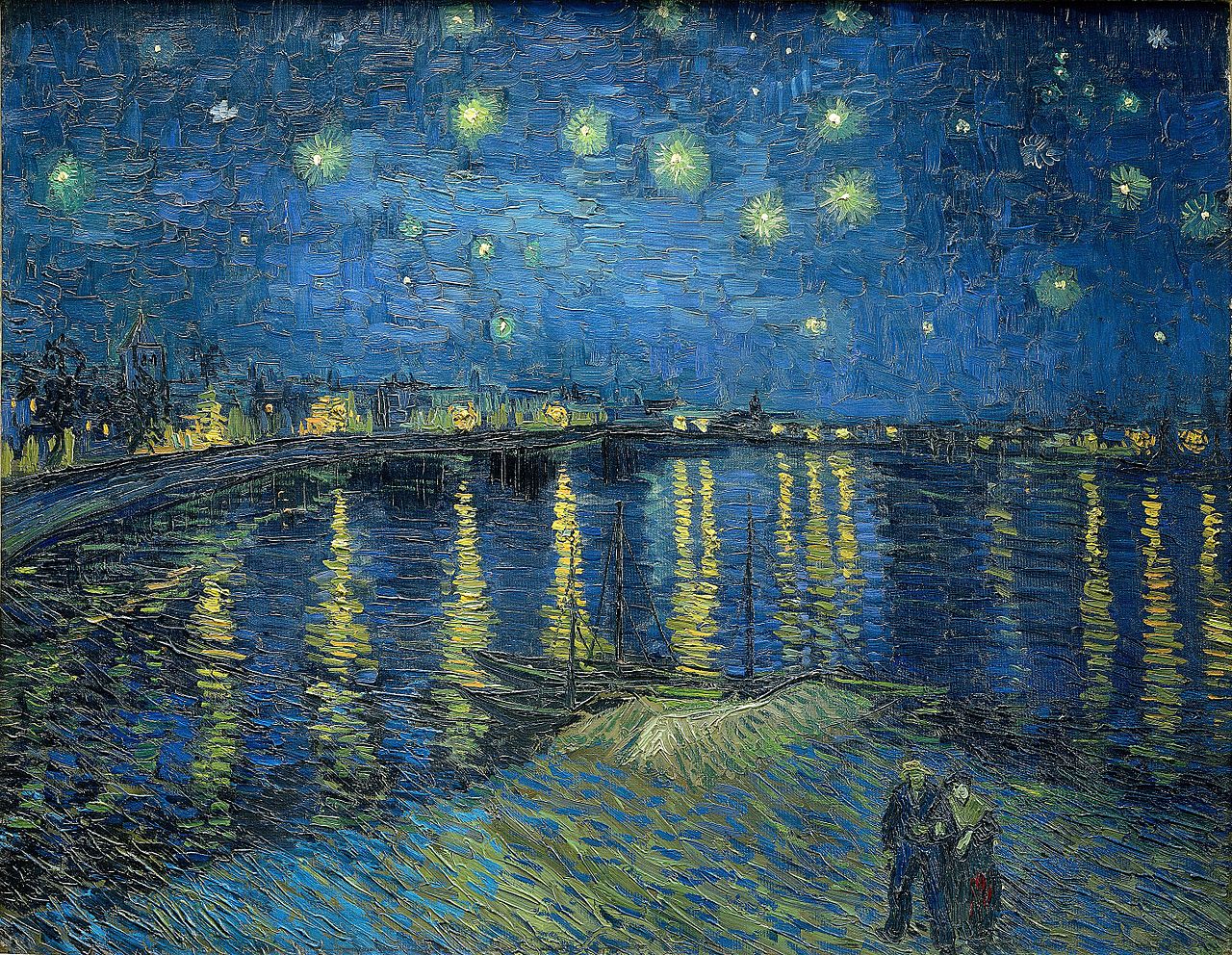
Thumbnail. Click to enlarge.
FULL VIEW - SMALL/MEDIUM: https://cdn.nikoncafe.com/attachments/t...g.1770471/
FULL VIEW - VERY LARGE: https://upload.wikimedia.org/wikipedia/...roject.jpg
PHOTO GALLERY - SMALL/MEDIUM - VERY HQ: https://www.musee-orsay.fr/en/artworks/...ilee-78696
Portrait of a Peasant (Patience Escalier) - Vincent van Gogh (1888)

Thumbnail. Click to enlarge.
PHOTO GALLERY - ZOOM FUNCTION: https://www.facebook.com/photo?fbid=388...7037137040
FULL VIEW - ZOOM FUNCTION: https://www.nortonsimon.org/art/detail/M.1975.06.P
The Night Cafe - Vincent Van Gogh (1888)

Thumbnail. Click to enlarge.
FULL VIEW - MEDIUM: https://images.squarespace-cdn.com/cont...rmat=2500w
FULL VIEW - LARGE: https://upload.wikimedia.org/wikipedia/...gh_076.jpg
PHOTO GALLERY - FULL VIEW AND DETAILS: https://www.flickr.com/photos/profzucke...otostream/
IMAGE FOR SCALE: https://www.vincentvangogh.org/images/t...-photo.jpg
Sunflowers - Vincent Van Gogh (1888) [3rd Version, Munich]

Thumbnail. Click to enlarge.
FULL VIEW: https://www.flickr.com/photos/erintheredmc/41792044191/
FULL VIEW - LARGE: https://www.flickr.com/photos/mazanto/14844837143/
FULL VIEW - VERY LARGE: https://upload.wikimedia.org/wikipedia/...ion%29.jpg
IMAGE FOR SCALE - Neue Pinakothek, Munich, Germany: https://www.dreamstime.com/royalty-free...ge20723307
Sunflowers - Vincent van Gogh (1888) [4th Version] / National Gallery, London, England [Painting]

Thumbnail. Click to enlarge.
FULL VIEW - VERY LARGE: https://upload.wikimedia.org/wikipedia/...gh_127.jpg
FULL VIEW - VERY LARGE: https://upload.wikimedia.org/wikipedia/...allery.jpg
FULL VIEW - VERY LARGE: https://upload.wikimedia.org/wikipedia/...don%29.jpg
FULL VIEW - VERY HQ - ZOOM FUNCTION: https://www.nationalgallery.org.uk/pain...sunflowers
Self-Portrait with Bandaged Ear - Vincent van Gogh (1889) / Courtauld Gallery, London, England [Painting]

Thumbnail. Click to enlarge.
FULL VIEW - LARGE: https://www.reddit.com/r/vangogh/commen.../#lightbox
FULL VIEW - LARGE: https://courtauld.ac.uk/highlights/self...&pid=1
FULL VIEW - VERY LARGE: https://upload.wikimedia.org/wikipedia/...ute%29.jpg
Irises - Vincent van Gogh (1889)

Thumbnail. Click to enlarge.
FULL VIEW - MEDIUM: https://upload.wikimedia.org/wikipedia/...Museum.jpg
FULL VIEW - LARGE: https://upload.wikimedia.org/wikipedia/...889%29.jpg
FULL VIEW - VERY LARGE: https://upload.wikimedia.org/wikipedia/...n_Gogh.jpg
PHOTO GALLERY - FULL VIEW AND DETAILS: https://www.flickr.com/photos/profzucke...otostream/
The Starry Night - Vincent van Gogh (1889)

Thumbnail. Click to enlarge.
FULL VIEW - LARGE: https://www.reddit.com/r/pics/comments/.../#lightbox
FULL VIEW - VERY LARGE: https://upload.wikimedia.org/wikipedia/...roject.jpg
FULL VIEW - ZOOM FUNCTION: https://artsandculture.google.com/asset...3-Pg?hl=en
DETAIL - RIGHT UPPER CORNER: https://upload.wikimedia.org/wikipedia/...-right.jpg
DETAIL - LOWER LEFT SIDE: https://upload.wikimedia.org/wikipedia/...t-left.jpg
DETAIL - LOWER RIGHT CORNER: https://upload.wikimedia.org/wikipedia/...-right.jpg
PHOTO GALLERY - FULL VIEW AND DETAILS: https://www.flickr.com/photos/profzucke...otostream/
FULL VIEW - MUSEUM OF MODERN ART, NEW YORK, USA: http://www.jessicasiemens.com/wp-conten...hsmall.jpg
Wheat Field With Cypresses - Vincent van Gogh (1889)
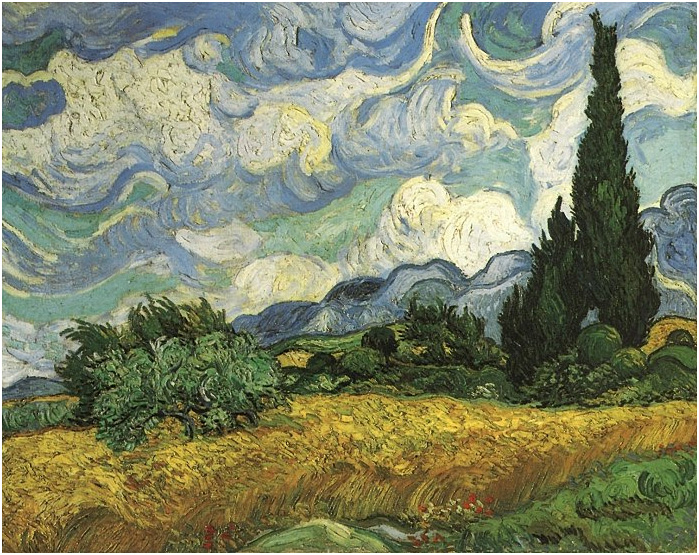
Thumbnail. Click to enlarge.
FULL VIEW - VERY LARGE - HIGH QUALITY: https://upload.wikimedia.org/wikipedia/...gh-Met.jpg
FULL VIEW - VERY LARGE - VERY HIGH QUALITY - ZOOM FUNCTION: https://www.metmuseum.org/art/collection/search/436535
DETAIL: https://newyorkmind.wordpress.com/wp-co...seup-1.jpg
Misc Notes for future analysis
Van Gogh expresses an obsessive desire to convey beauty. But the key is that it is not beauty alone, simply and freely expressed, but beauty through pain, a near frantic attempt to absolve his pain through his work by trying to experience the beauty in things. And what makes it so extraordinary is that the pain is also evoked in the act of this attempt, through the heavy strokes, the torturous calamity and anxiety of his brush work and the torturous mixture and calamity of colors. So when you view it up close (an absolute must with Van Gogh, which will also mimic and immerse oneself in his close up POV towards the canvas) realize that when you are following his brush strokes and frantic forms and obsessive anxiety and wild mix of colors you are literally witnessing too, the tortured mental phenomena of his anguish being applied to his work in an attempt to find therapy and to salvage himself through his obsessively committed and devotional act of painting (which he considered akin to a religious experience. He essentially replaced Church and religious service with trying to paint daily or as consistently as possible to try and find that solace and meaning). As a child he was haunted by seeing a grave with the name "Vincent" on it, and much of his work conveys symbology of this momento mori, often that of cypress trees (which are symbols of death, or the passage of death). His dark, torturous, obsessively painted and lined cypress trees, often reaching into the sky (heavens) to near the top of his paintings, are his internal conversation and recurring nightmare with this, and perhaps a metaphor for self, facing mortality: gesturing and reaching upwards in decrepit, anguished form, death knocking at the door. The work as a whole features a very unique array of unusual colors. The variation in color alone is its own highly emotional aspect to the work (as Van Gogh was at the expressionist vanguard of using color alone to "mean" an emotion conveyed), including the spastic array and highly unusual combinations of colors among the bushes and what-not, and including all the heavy and obsessive wavering variations on whites and unusual grayish and blue-ish shades for the sky and clouds (to highlight two very different examples in the same painting). But overall too, the strange and autumnal colors of the work combine to convey a scene that is highly ambiguous between "beauty" and "bleak"/"mournful". There is not one part of the painting that isn't struck by this ambiguity, between reflection, resignation and haunted yearnings, even troubling gestures among the bleak color in his strokes, the twisting and turning and tortured line in his forms. Van Gogh is not just painting, he is painting a highly individual psychology, baring himself through and in the act of the picture. He is not just painting a landscape, but he is painting a landscape of the soul.
Cypresses - Vincent Van Gogh (1889)

Thumbnail. Click to enlarge.
FULL VIEW - MEDIUM: https://eclecticlight.co/wp-content/upl...s1889.jpeg
FULL VIEW - LARGE: https://www.flickr.com/photos/ilnycilnyc/35732556633/
FULL VIEW - LARGE: https://upload.wikimedia.org/wikipedia/...130999.jpg
FULL VIEW - VERY LARGE: https://upload.wikimedia.org/wikipedia/...resses.jpg
FULL VIEW - VERY LARGE: https://upload.wikimedia.org/wikipedia/...h_0016.jpg
FULL VIEW - VERY LARGE - HIGHEST QUALITY - ZOOM FUNCTION: https://www.metmuseum.org/art/collection/search/437980
Enclosed Field with Rising Sun - Vincent van Gogh (1889)

Thumbnail. Click to enlarge.
FULL VIEW - VERY LARGE: https://www.reddit.com/r/museum/comment.../#lightbox
FULL VIEW - ZOOM FUNCTION: https://www.facebook.com/vangoghthelife...1902/?_rdr
Landscape with Wheat Sheaves and Rising Moon - Vincent van Gogh (1889) / Kröller-Müller Museum, Otterlo, Netherlands [Painting]

Thumbnail. Click to enlarge.
FULL VIEW - MEDIUM: https://krollermuller.nl/en/vincent-van...ising-moon
FULL VIEW - ZOOM FUNCTION: https://artsandculture.google.com/asset...in1w?hl=en
Self-Portrait - Vincent van Gogh (1889)
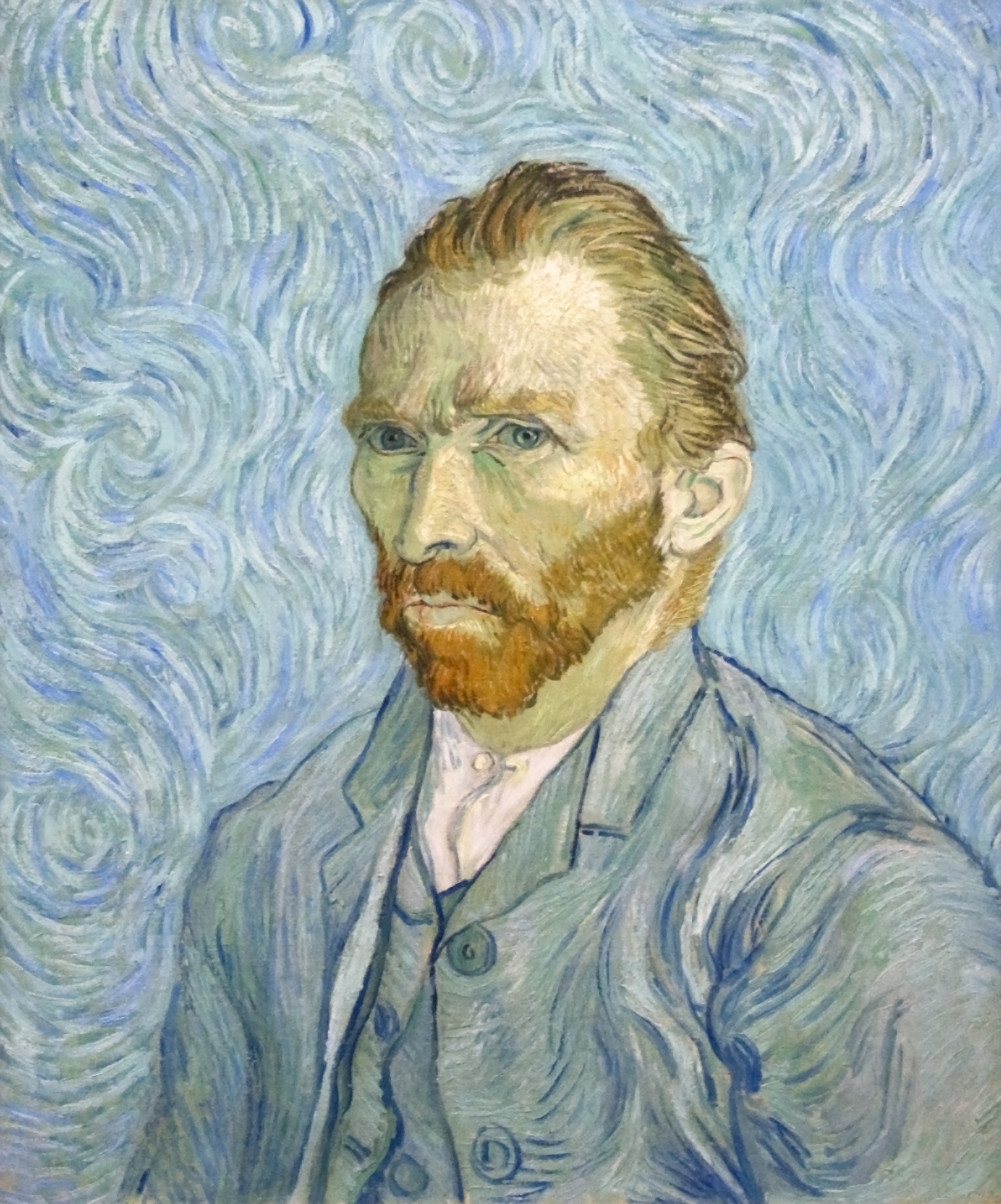
Thumbnail. Click to enlarge.
FULL VIEW - MEDIUM: https://upload.wikimedia.org/wikipedia/...%2C_01.JPG
FULL VIEW - VERY LARGE: https://upload.wikimedia.org/wikipedia/...roject.jpg
FULL VIEW - ZOOM FUNCTION: https://artsandculture.google.com/asset...CkwQ?hl=en
Cypresses with Two Figures - Vincent van Gogh (1889 - 1890)
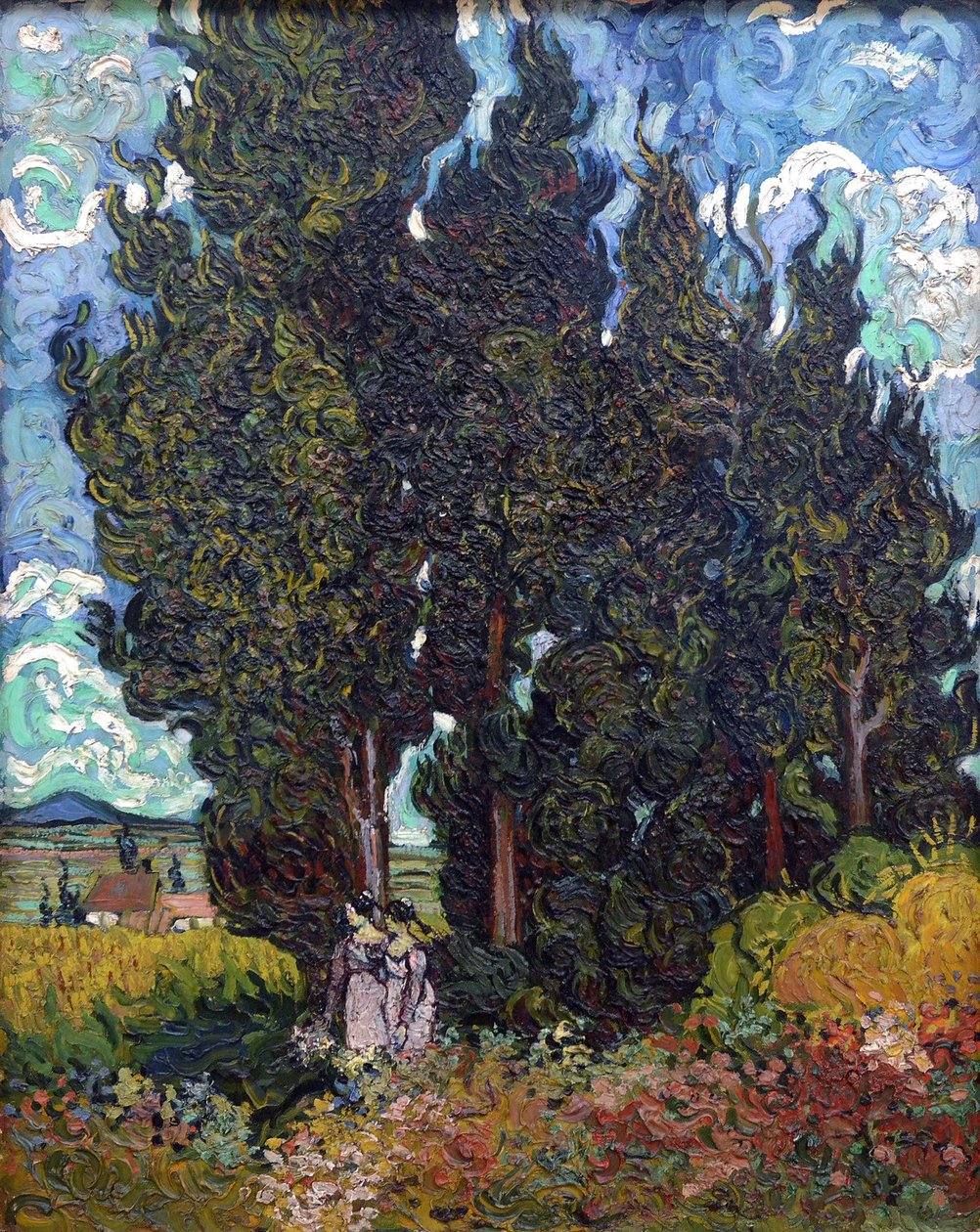
Thumbnail. Click to enlarge.
FULL VIEW - ZOOM FUNCTION: https://artsandculture.google.com/asset...GS_Q?hl=en
First Steps, after Millet - Vincent van Gogh (1890) / Metropolitan Museum of Art, New York [Painting]

Thumbnail. Click to enlarge.
FULL VIEW - VERY LARGE: https://upload.wikimedia.org/wikipedia/..._Steps.jpg
FULL VIEW - ZOOM FUNCTION: https://artsandculture.google.com/asset...Buug?hl=en
FULL VIEW - VERY HQ - ZOOM FUNCTION: https://www.metmuseum.org/art/collection/search/436526
The Church at Auvers - Vincent van Gogh (1890)

Thumbnail. Click to enlarge.
FULL VIEW - VERY LARGE: https://upload.wikimedia.org/wikipedia/...roject.jpg
FULL VIEW - VERY LARGE - ZOOM FUNCTION: https://artsandculture.google.com/asset...kTtA?hl=en
Wheatfield with Crows - Vincent van Gogh (1890)

Thumbnail. Click to enlarge.
FULL VIEW - MEDIUM: https://upload.wikimedia.org/wikipedia/...890%29.jpg
FULL VIEW - VERY LARGE: https://upload.wikimedia.org/wikipedia/..._Crows.jpg
Road with Cypress and Star - Vincent van Gogh (1890)

Thumbnail. Click to enlarge.
FULL VIEW - VERY LARGE: https://upload.wikimedia.org/wikipedia/...y_1890.jpg
Cypresses and Two Women - Vincent van Gogh (1890)
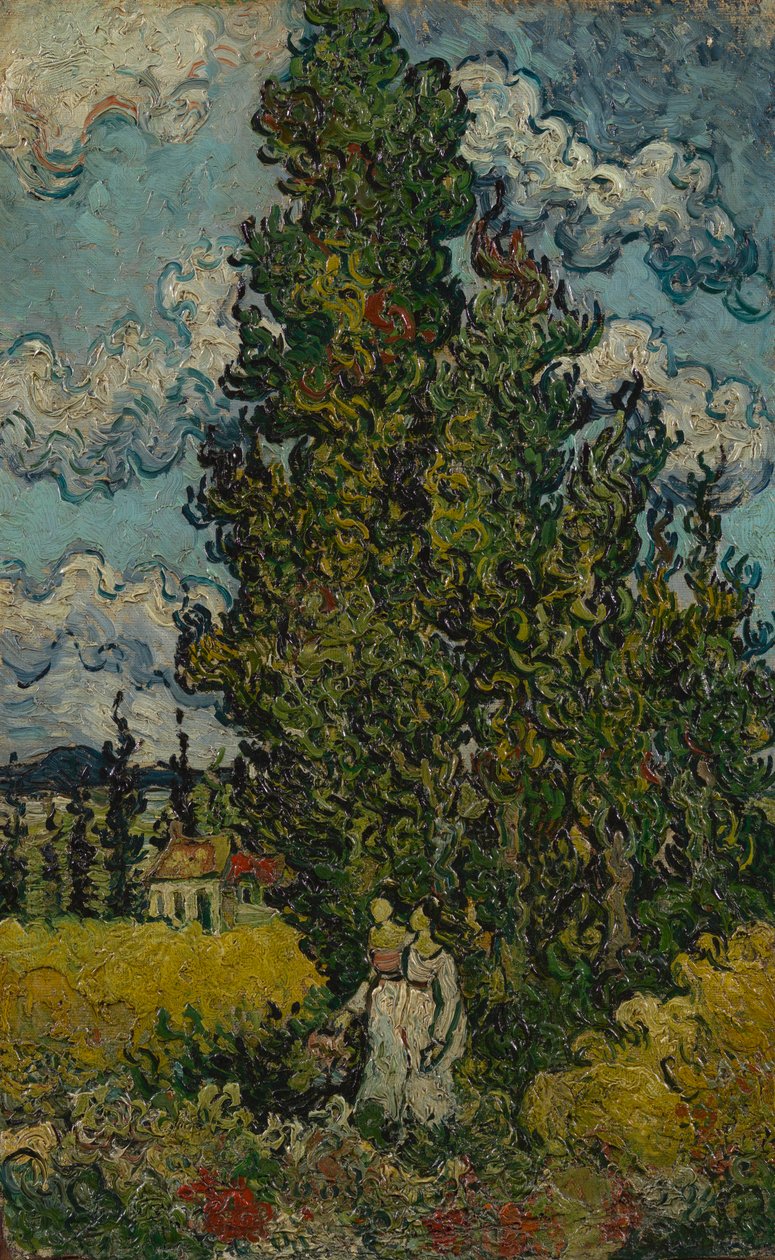
Thumbnail. Click to enlarge.
FULL VIEW - SMALL/MEDIUM: https://www.nighthawknyc.com/wp-content...Aff2NH.jpg
FULL VIEW - VERY HQ - ZOOM FUNCTION: https://www.vangoghmuseum.nl/en/collection/s0147V1962
Street in Auvers-sur-Oise - Vincent van Gogh (1890; Probably unfinished upon death) / Anteum Art Museum, Helsinki, Finland [Painting]

Thumbnail. Click to enlarge.
FULL VIEW - ZOOM FUNCTION: https://artsandculture.google.com/asset...ohNg?hl=en
_________________
Best Classical
Best Films
Best Paintings
Last edited by AfterHours on 5 days ago; edited 35 times in total
|
|
|
|
AfterHours
Gender: Male
Location: The Zone
|
AfterHours
Gender: Male
Location: The Zone
|
AfterHours
Gender: Male
Location: The Zone
- #120
- Posted: 05/26/2022 23:59
- Post subject:
|
Egon Schiele (1890 - 1918)
Best Works:
7.2/10: Pregnant Woman and Death (1911)
6.9/10: Agony (1912)
6.8/10: Mother With Two Children II (1915)
7.6/10: Death and the Maiden (1915)
6.8/10: Mother With Two Children III (1917)
7.0/10: The Family (1917)
Pregnant Woman and Death - Egon Schiele (1911)

Thumbnail. Click to enlarge.
FULL VIEW - VERY LARGE - ZOOM FUNCTION: https://sbirky.ngprague.cz/en/dielo/CZE:NG.O_4396/zoom
Agony - Egon Schiele (1912)

Thumbnail. Click to enlarge.
FULL VIEW - VERY LARGE: https://upload.wikimedia.org/wikipedia/...SC7281.jpg
FULL VIEW - VERY LARGE - ZOOM FUNCTION: https://www.sammlung.pinakothek.de/de/a...Qlx25nB4Xq
Mother With Two Children II - Egon Schiele (1915)

Thumbnail. Click to enlarge.
FULL VIEW - VERY LARGE: https://upload.wikimedia.org/wikipedia/commons/thumb/0/0e/Mother_with_two_children_II_Egon_Schiele_1915.jpg/1096px-Mother_with_two_children_II_Egon_Schiele_1915.jpg
IMAGE: https://www.flickr.com/photos/anita_pravits/14127411666
IMAGE: https://www.flickr.com/photos/145003604@N02/44264625640
IMAGE - MUSEUM:
Death and the Maiden - Egon Schiele (1915)

Thumbnail. Click to enlarge.
FULL VIEW - VERY LARGE: https://upload.wikimedia.org/wikipedia/...vedere.jpg
FULL VIEW - VERY LARGE: https://upload.wikimedia.org/wikipedia/...le_012.jpg
FULL VIEW - VERY LARGE IMAGE - HIGH QUALITY - ZOOM FUNCTION: https://artsandculture.google.com/asset...fJ_w?hl=en
PHOTO GALLERY - FULL VIEW, DETAILS, AND SCALE: https://www.flickr.com/photos/anita_pra...otostream/
-Very morbid response to Klimt and The Kiss
-Technique is stricken with anxiety, fear, distress of color/line/form struck between "feverish" and "paralysis, rigidity" (again, a reflection of those emotions and the turmoil of the time)
-Schiele paints himself as the figure of "Death" bony, soulless, darkened by browns and charred hues
-He paints his long term lover Wally in a desperate embrace with him
-Only not just a simple loving gesture or kiss, rather he is sucking, like a vampire, either just removed from her neck or into side of her head, face, blood running from his mouth
-His eyes are dark, dead, soulless (also in a state of perpetual shock), his body skeletal, emaciated, warped
-Her body looks like the rotting remains, emaciated
-Both bodies are hardened of line and thick application, states in or approaching rigor mortis (while also painted expressing anxiety, feverishly applied and barren color, feverish detail)
-His body being extra skeletal, also features emaciated, long and nightmarish fingers that emphasize the horrific and violent or cruel or haunted nature of the touch, not dissimilar to that of how Nosferatu will be depicted 7 years later in Murnau's classic
-The painting is set against the backdrop and anxieties of WW 1
-The landscape surrounding them is basically the trench of a battlefield, the ground is charred and barren
-Schiele had just denounced their 4 year relationship, a narcissist, treating Wally as if she meant nothing to him, wandering eye over to a younger female. Thus there is a soul-less, horrific element to his look and their embrace. He is not only "Death" but he is sucking the life out of her vampirically as she desperately embraces him, clings to him, her arms locked an immersed in his upper body.
-Simultaneously and paradoxically, the bottom half of their bodies are parting, almost falling, away from each other unnaturally. This reflects the denial of sex, the denial of circumstances from the War and the cold denial of Schiele
-Furthermore, Schiele's figure features unnaturally long lower body and legs in relation to the upper body, emphasizing the warped anatomy, the lower body's cruel and cold denial and lure and pull away from her despite also holding her close in the upper body
-Schiele's body seems clothed in WW 1 military clothes
-Wally's body is clothed in under dress of luxuriant Vienna
-Her body also reflects that of the beaten and harmed, bloodletting, grotesque, dying, the blood being sucked from it, the body maimed. It may reflect an exaggerated, narcissistic idea of both the cruel impact his denial of her may have upon her well-being and life, but also the apocalyptic harbinger that WW 1 was promising (the war being the end of times was promoted heavily in Vienna), and perhaps even a fear that she would be raped in its chaos, and/or the feeling that he had basically used and abused her as if a prostitute, and cruelly dismissing and dumping her like a pimp or customer may do so on the streets. It is likely a bit of each of these layers/fears/regrets, the painting a morbid, cruel, self-analysis. The original version, before Schiele himself changed it, was even more cruel, featuring a torn-open rear to Wally's under-dress, exposing just her bottom, further emphasizing these themes.
-There is a multitude of meanings: Schiele is a narcissist, both cold and disgusting, knowingly killing her by the shocking end of their long term relationship.
-He depicts her as almost elderly, bony, her under dress the color of blood and emaciated and deathly skin, to grotesquely denounce her as too old, skin rotting and falling away, and to emphasize horrifically the younger replacement he had encountered
-He depicts himself as "dead" to emphasize his fear of death from the ongoings and trench warfare of WW1
-There is loaded ambiguity in their embrace
-He depicts their bodies as hers a desperate embrace, his replying embrace cold and distant (touching her but not warmly, "distantly", as if she is disgusting to him). His right hand, grotesque skeletal fingers, is (ambiguously) almost shoving her away at the shoulder while the left hand holds her in close to suck her blood as a vampire
-While also the lower bodies part incongruously to the upper bodies, both clasping her and pushing her away while she desperately seeps into him with her arms losing themselves in his back and sides
-In their dress he is emphasizing their departure in society and class (he sucked into the War and a figure of certain Death; her of the upper class Vienna society).
-His skin and especially legs almost merge into the ground, the trench, the burial ground (except for the mild difference in color); form, charred, more or less the same figuration as the landscape. At the bottom of his legs, his feet virtually sink into the ground, another allusion to death and harbinger of burial
-In the white blanket they lay upon it is both blanket and burial shroud... There is almost a sense of separation from the trench or ground, like from one POV (hers) the feeling is that of being swept away, and are slightly above the ground or disassociated from the war torn barren ground, almost hovering, but (in a simultaneity of tension) from Schiele's they have only found the certain graveyard that the aftermath of battle and the shock and violence of bombs will bring, their whirlwind 4 year romance concluded by swift fate as he was on the verge of telling her (after she posed for the painting for him) and with the harbinger of his draft into the War looming like a nightmare.
-The painting also reflects a profound and morbid solitude. They are abandoned and no where in the world except a barren wasteland, left in a trench dead and dying, suffering through their cruel fates of destiny that seem inescapable by whim and the overpowering consequence of WW 1, while also the exaggerated view and end product of a narcisissist cruely dictating their lives
-The ground, the physical space around them, their positions, has a subtle allusion to the downward spiral and how the ground is lined and encircles them, how the blanket mostly surrounds them in the middle of this, and then how their bodies curl in and out of each other with the edges of his feet beginning the spiral back around to the top (from the bottom) again. This is a physical symbol of their fates, of their entrapment, of an inescapable spiral that they are forever in tide with, and forever repeating.
Mother With Two Children III - Egon Schiele (1917)

Thumbnail. Click to enlarge.
The Family - Egon Schiele (1917)

Thumbnail. Click to enlarge.
FULL VIEW - VERY LARGE: https://upload.wikimedia.org/wikipedia/...vedere.jpg
_________________
Best Classical
Best Films
Best Paintings
Last edited by AfterHours on 4 days ago; edited 13 times in total
|
|
|
|
|
  |
All times are GMT
|
| Page 12 of 27 |
|
|
|
You cannot post new topics in this forum
You cannot reply to topics in this forum
You cannot edit your posts in this forum
You cannot delete your posts in this forum
You cannot vote in polls in this forum
|
|
|